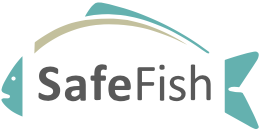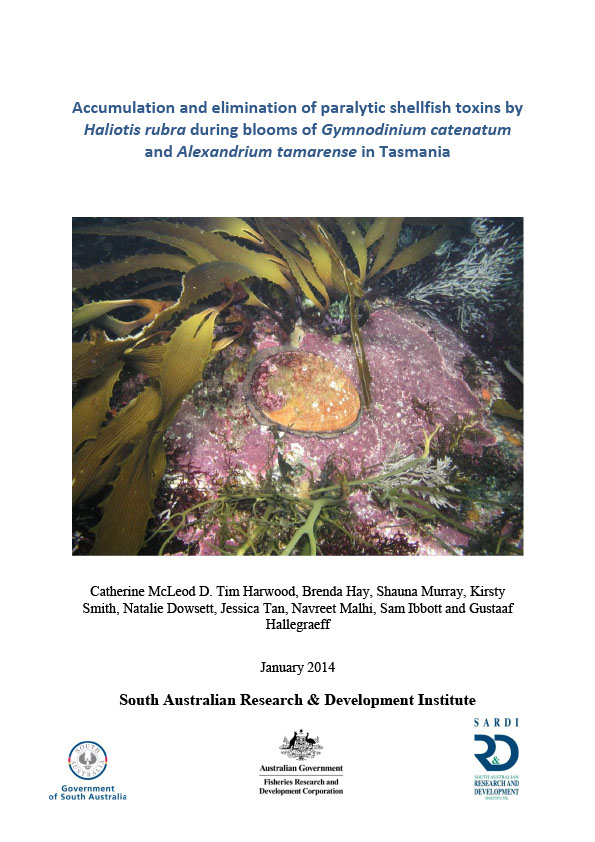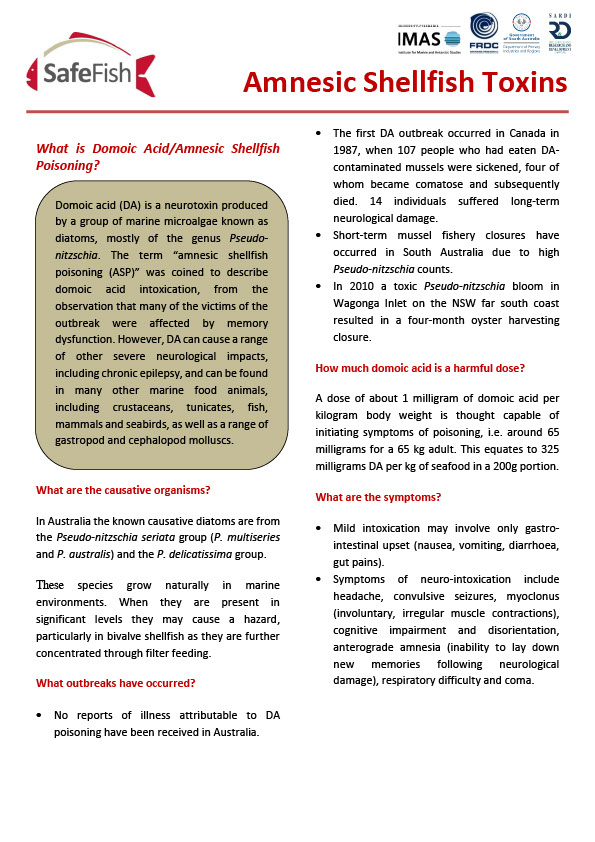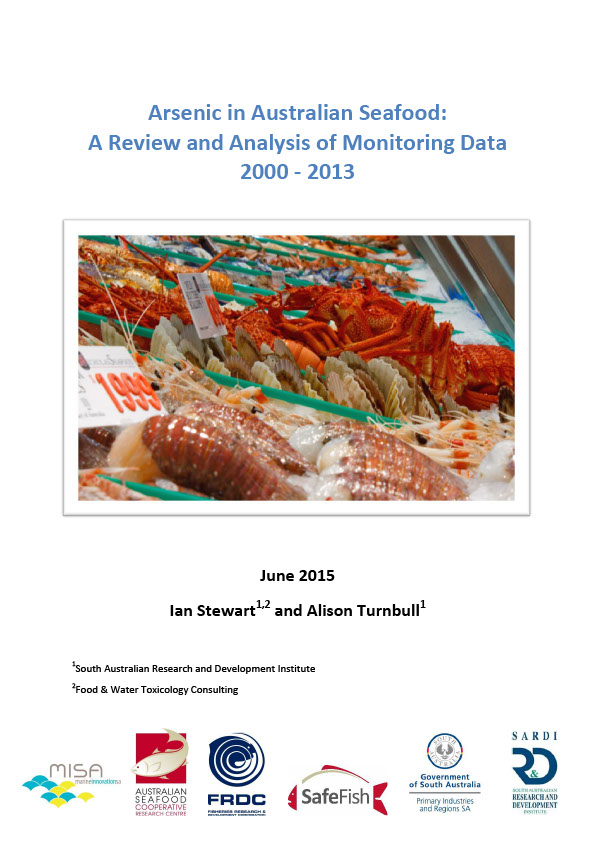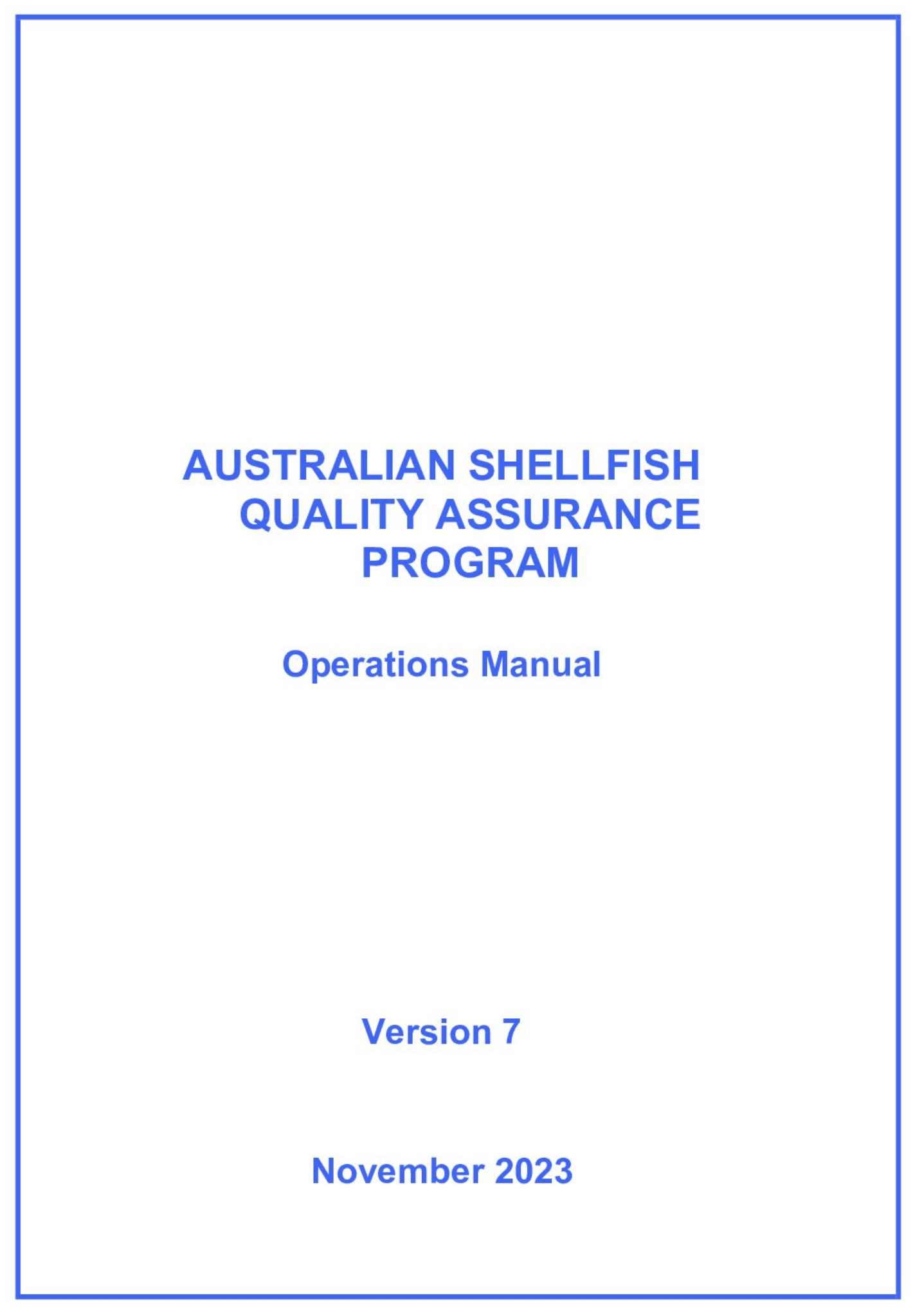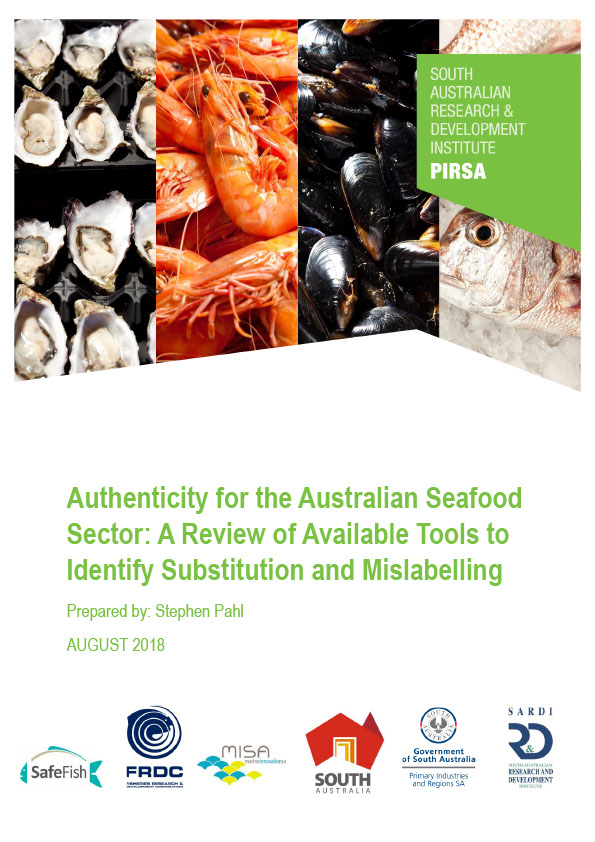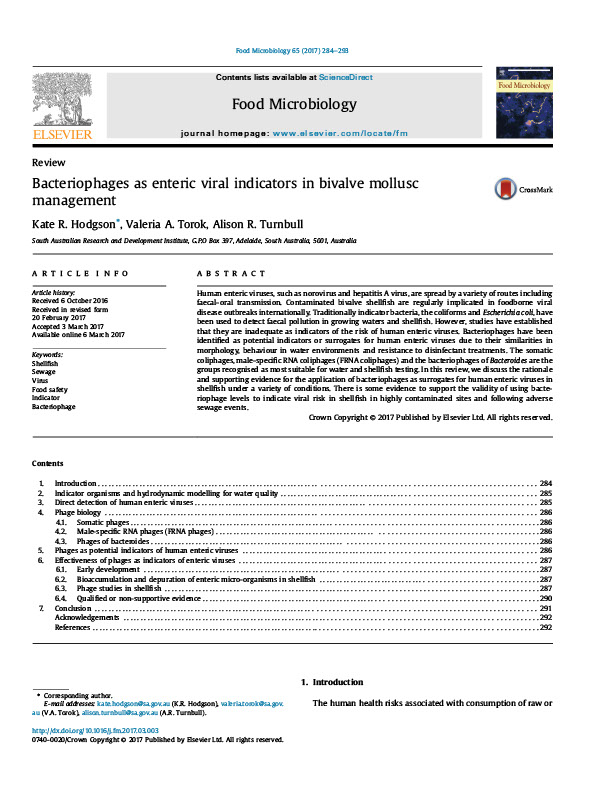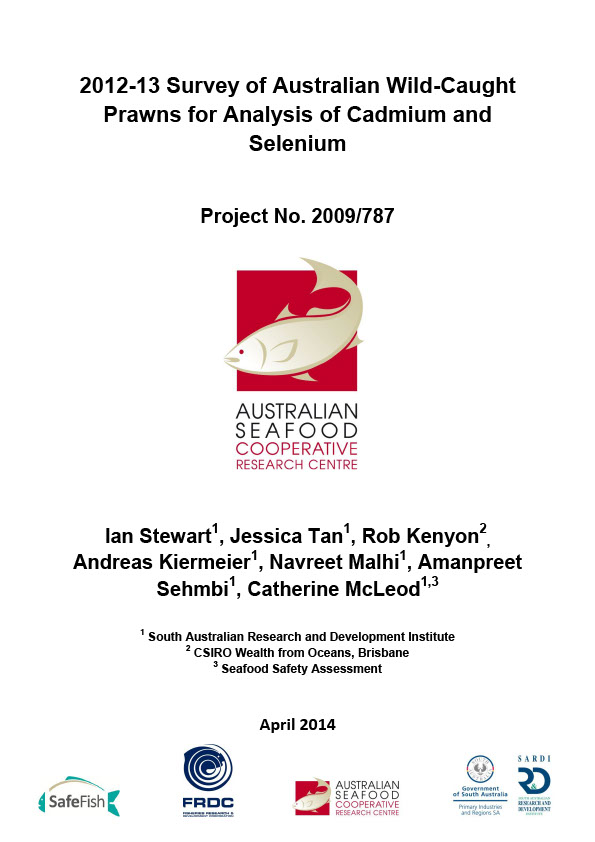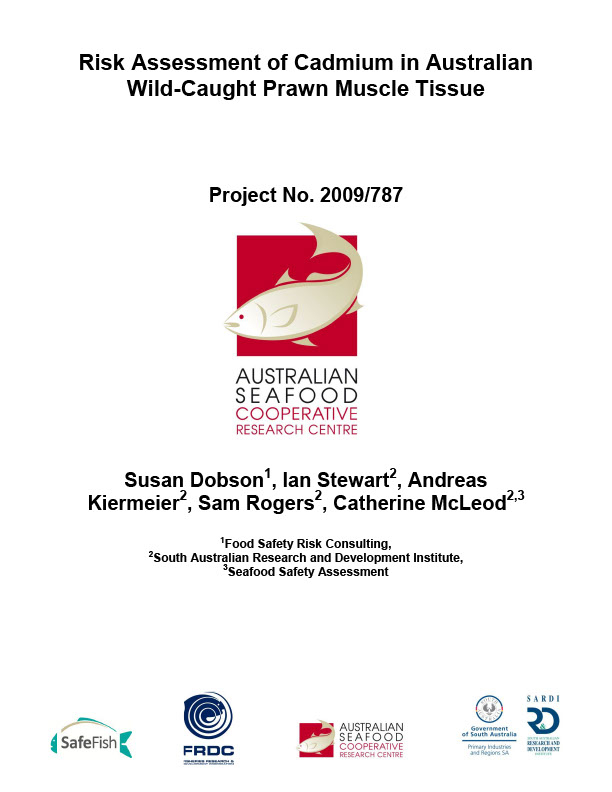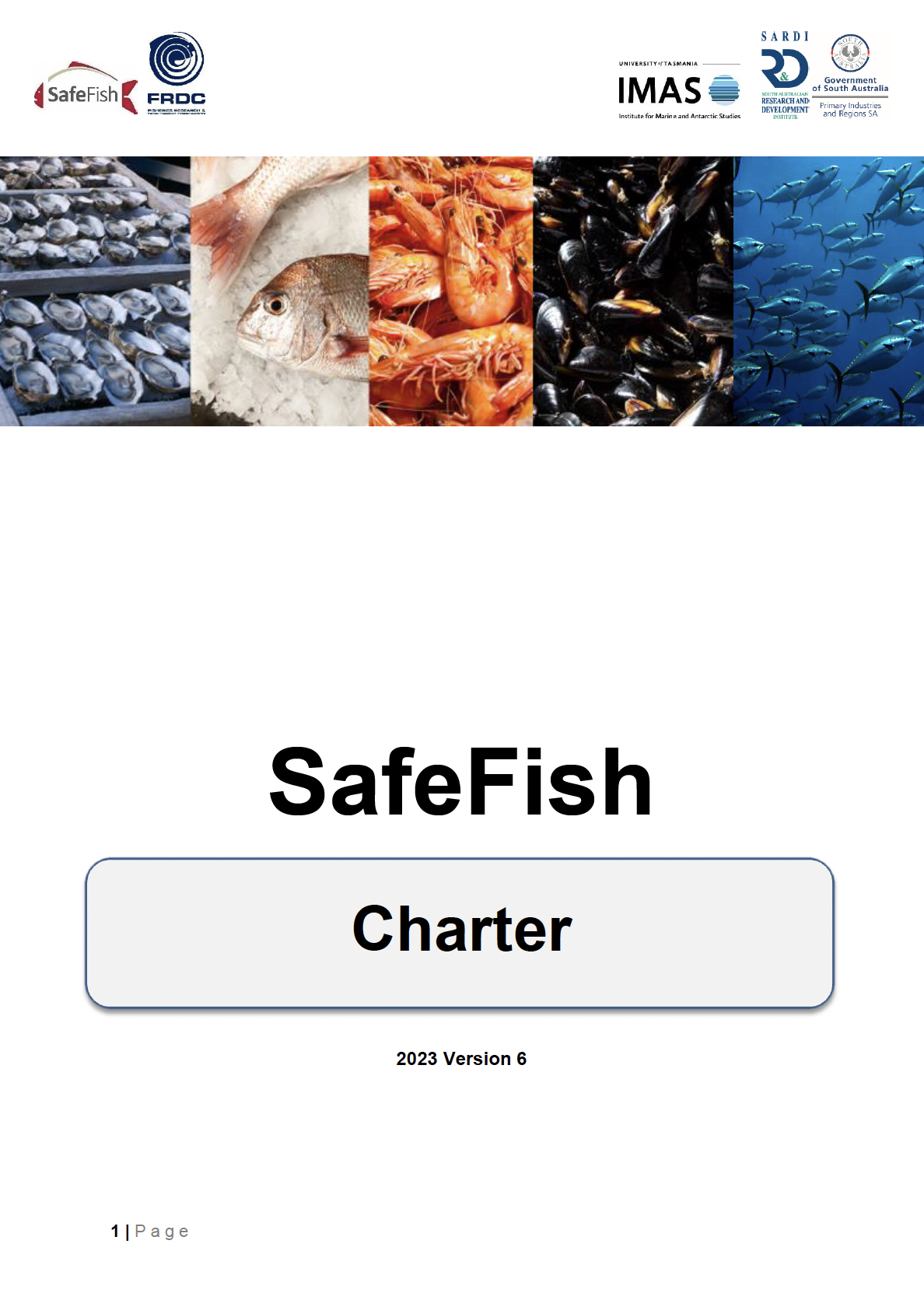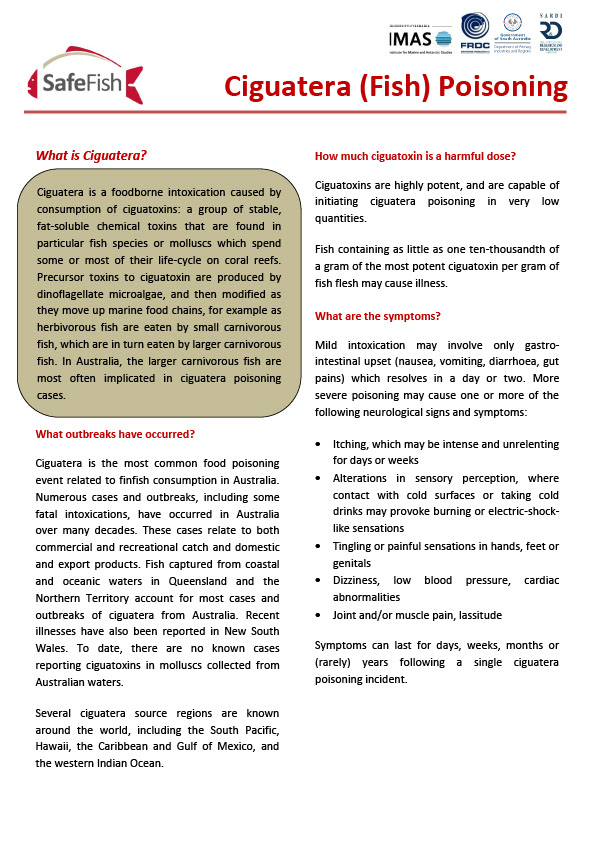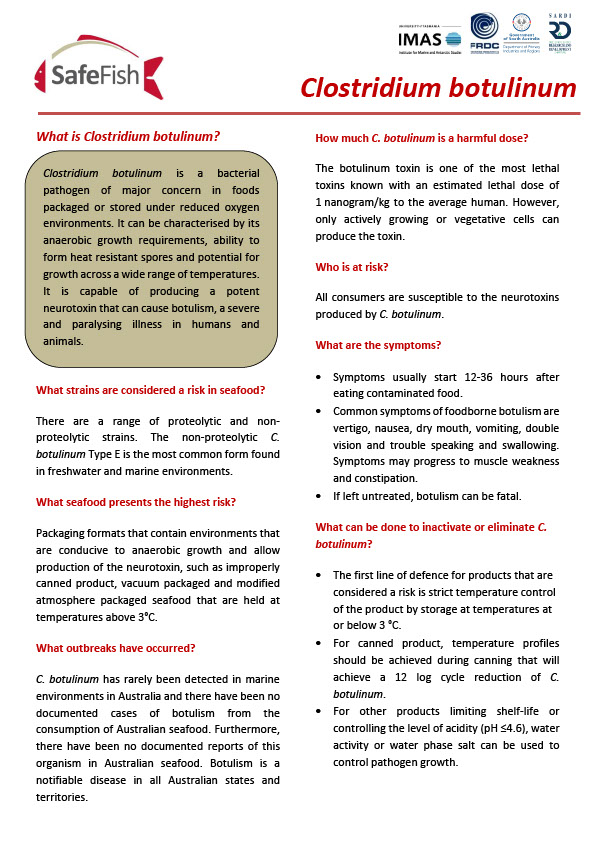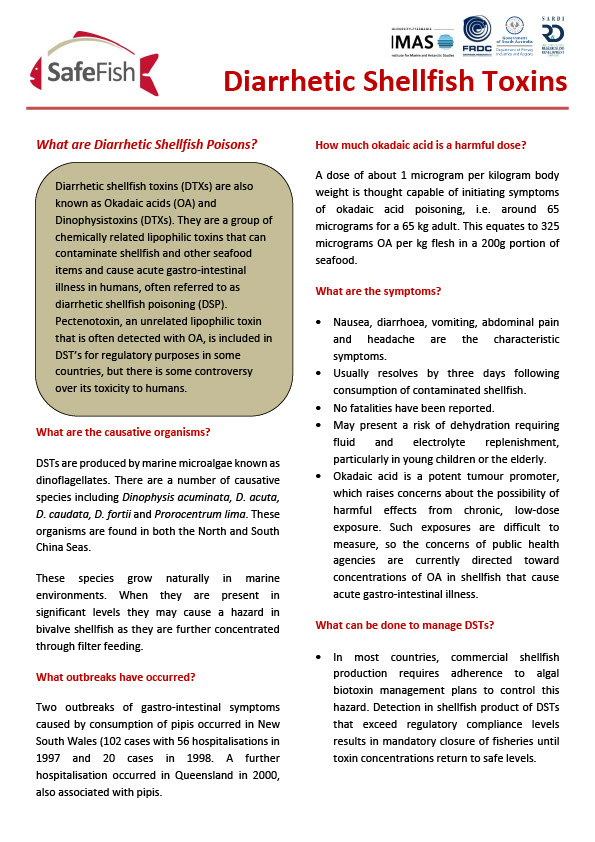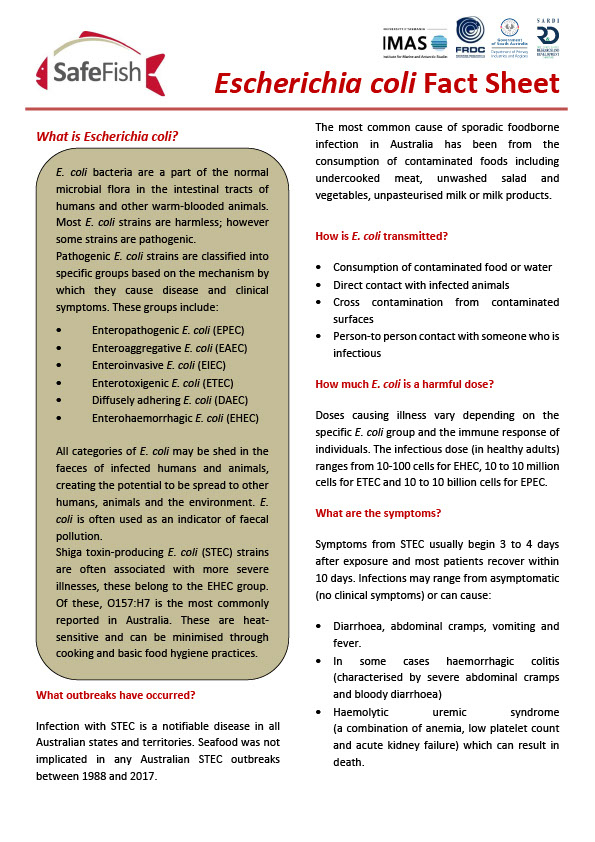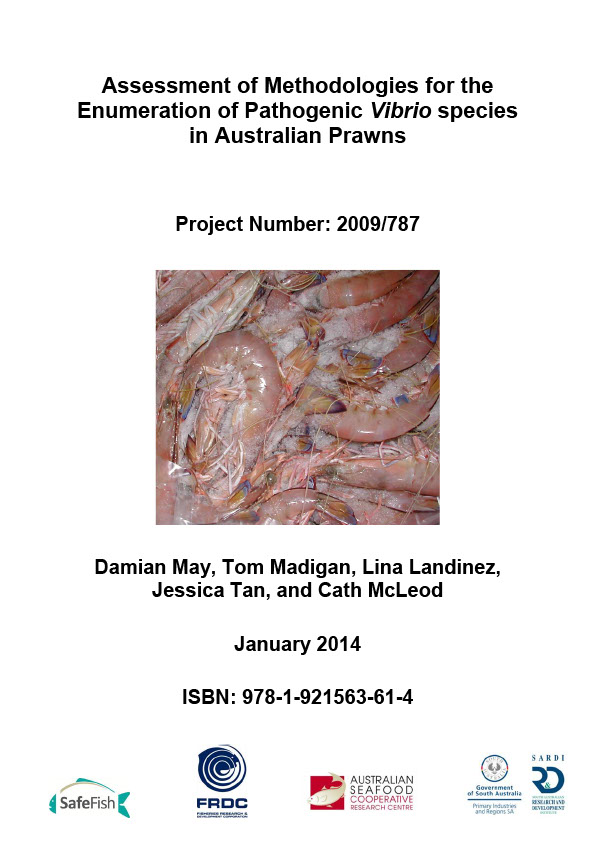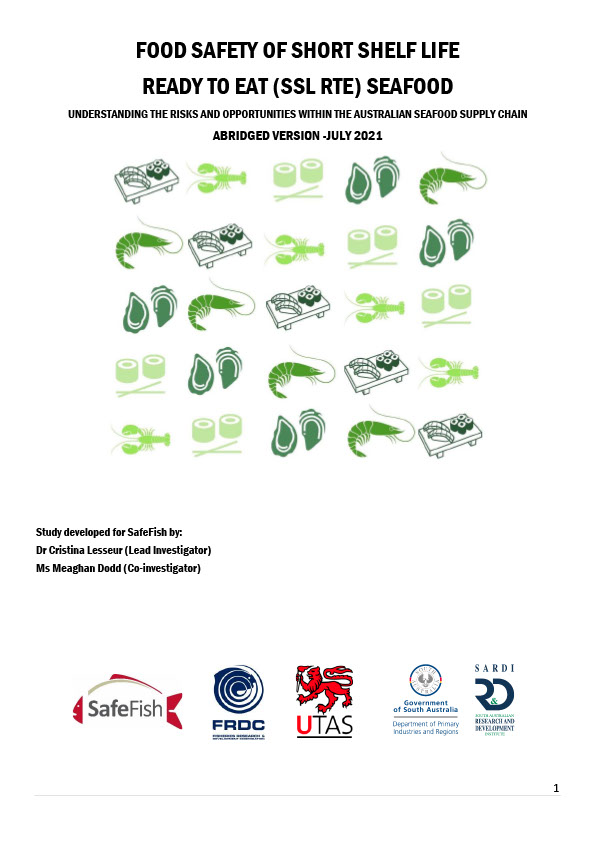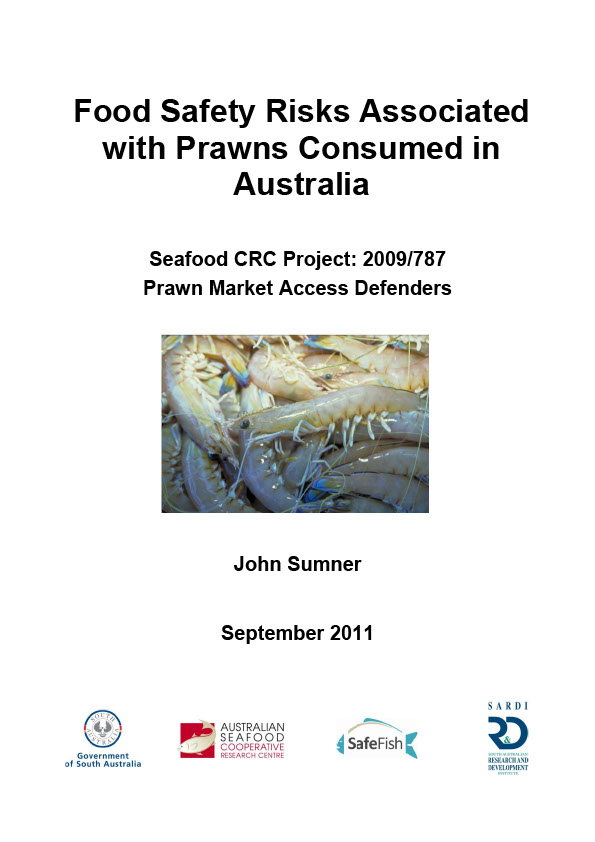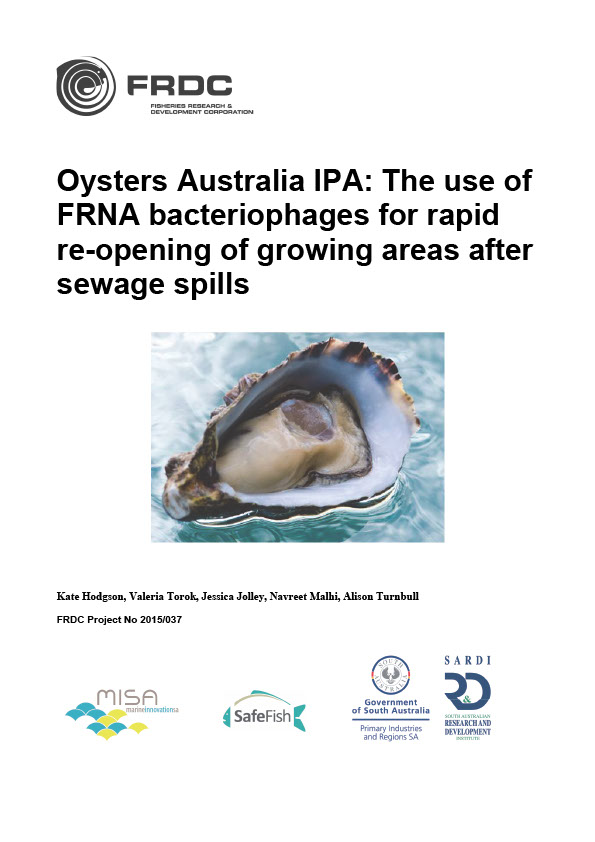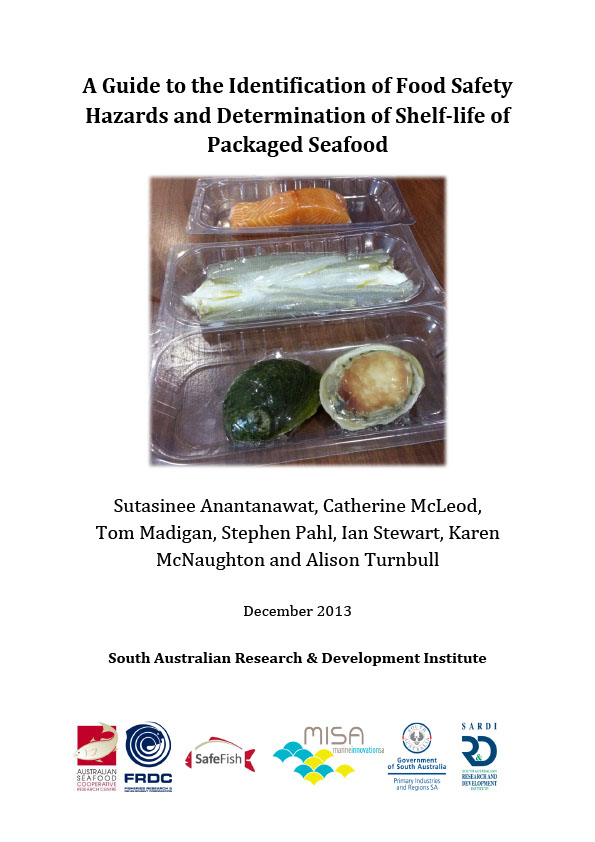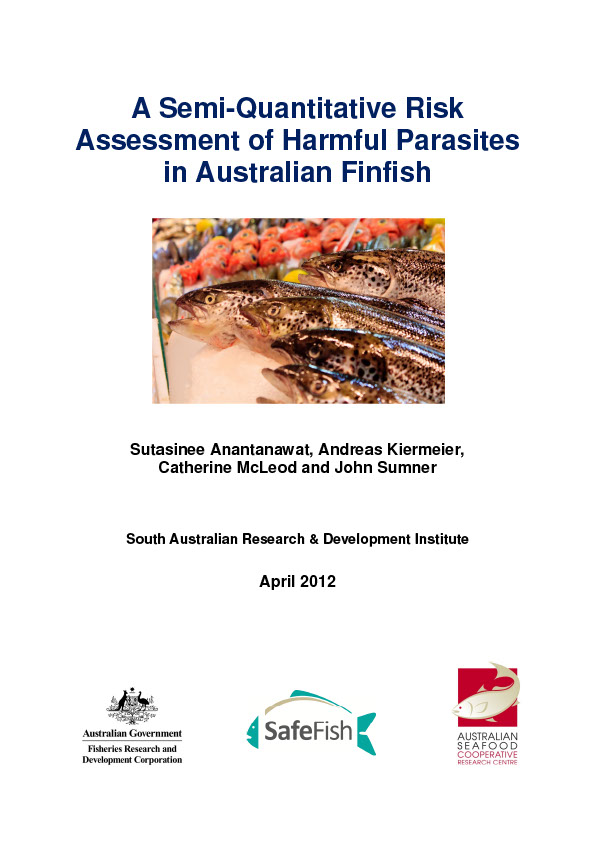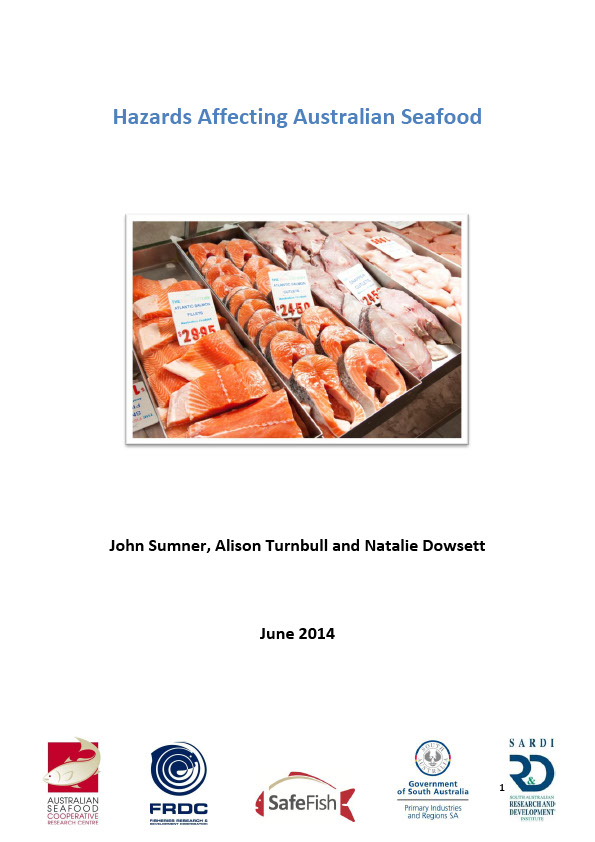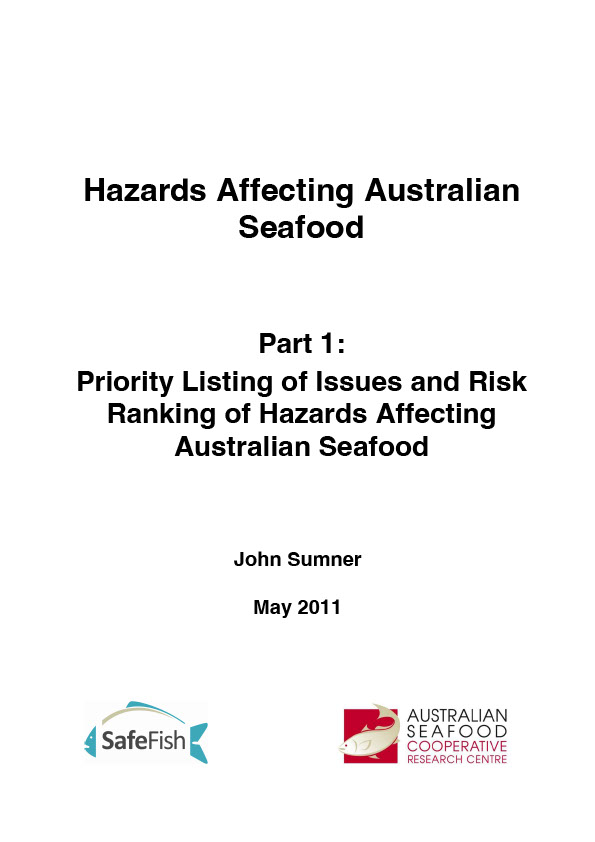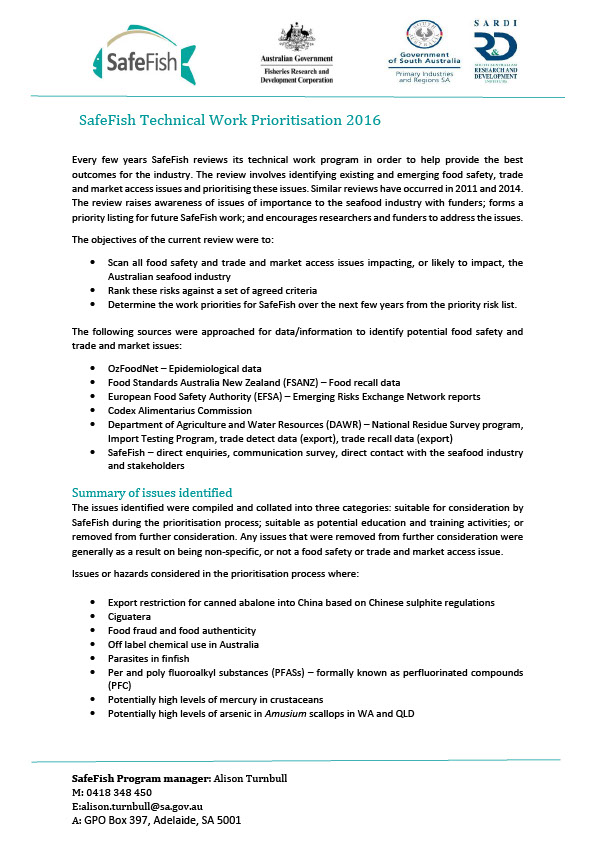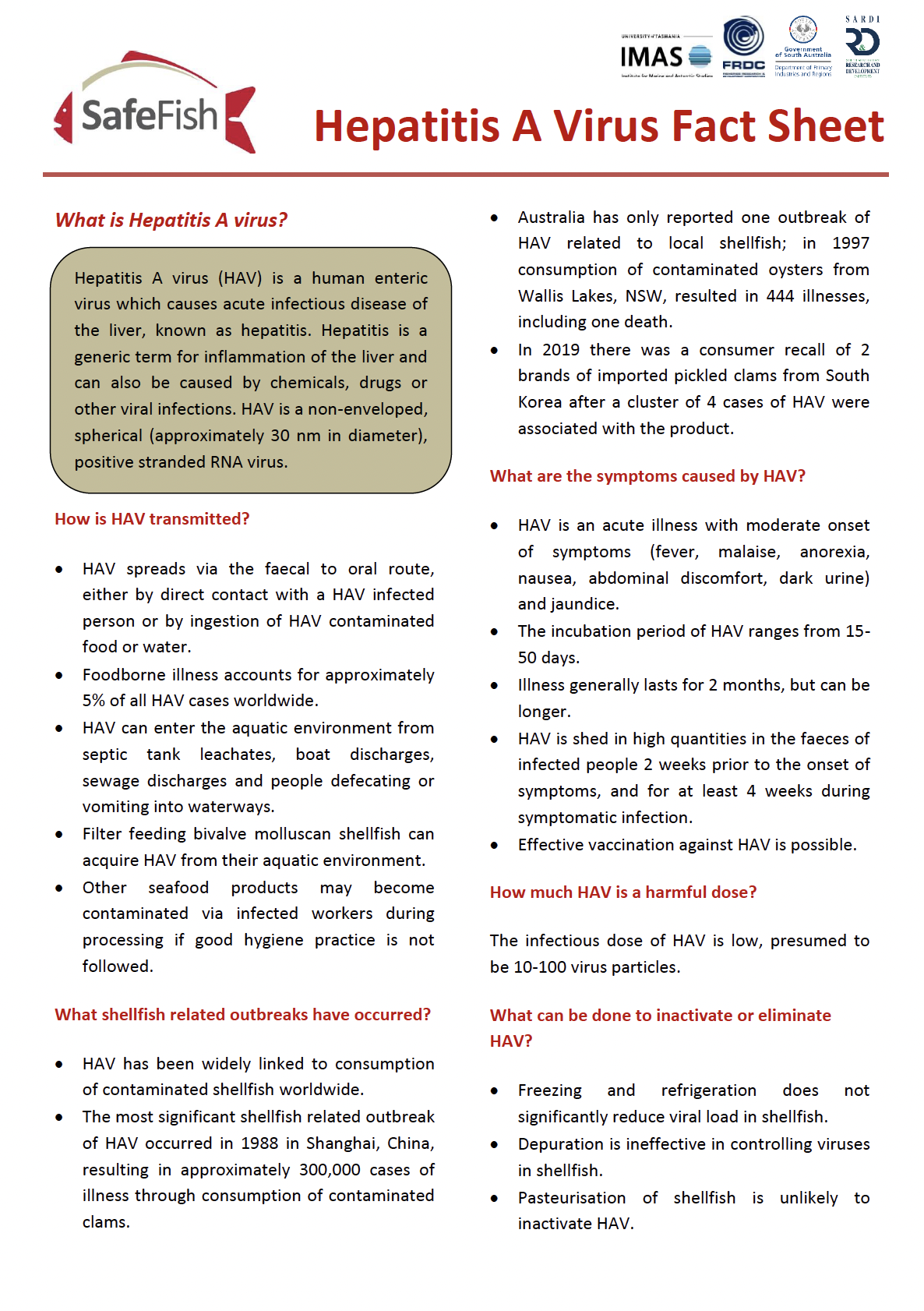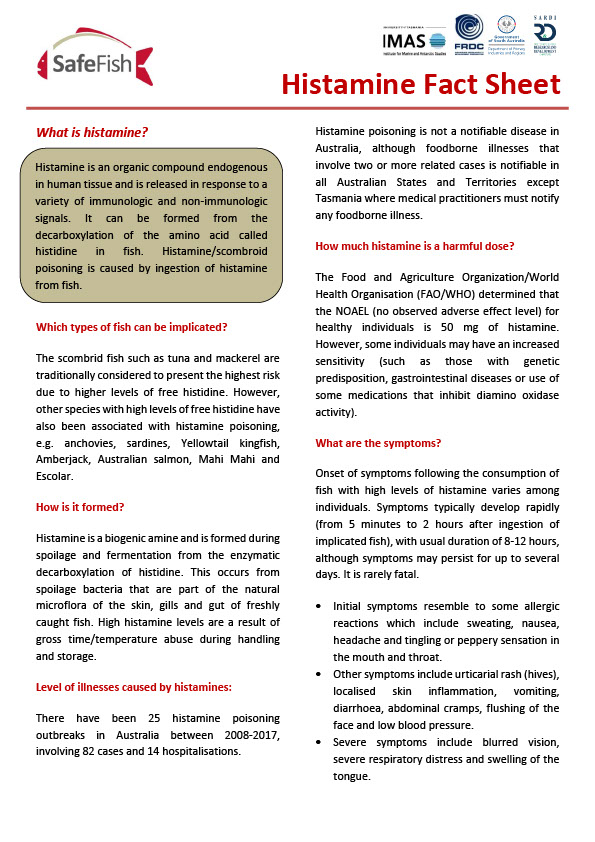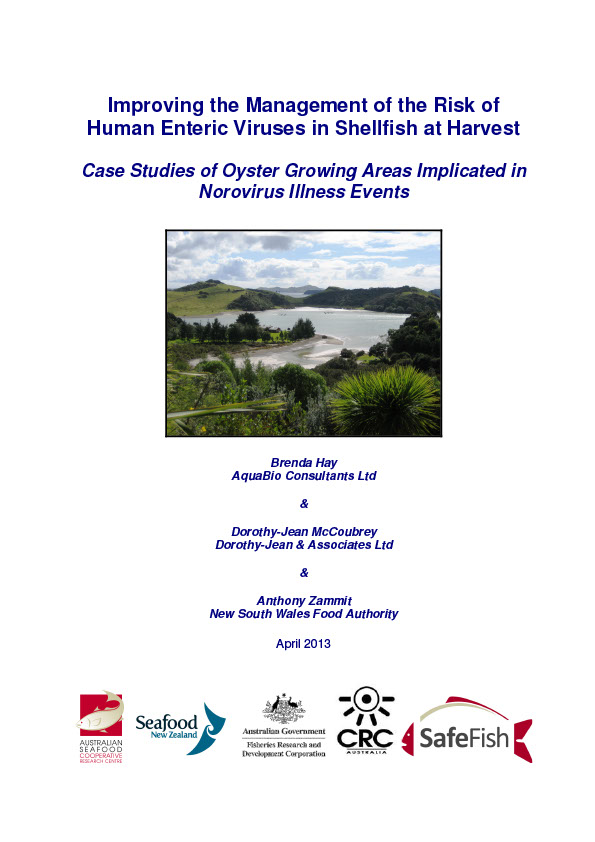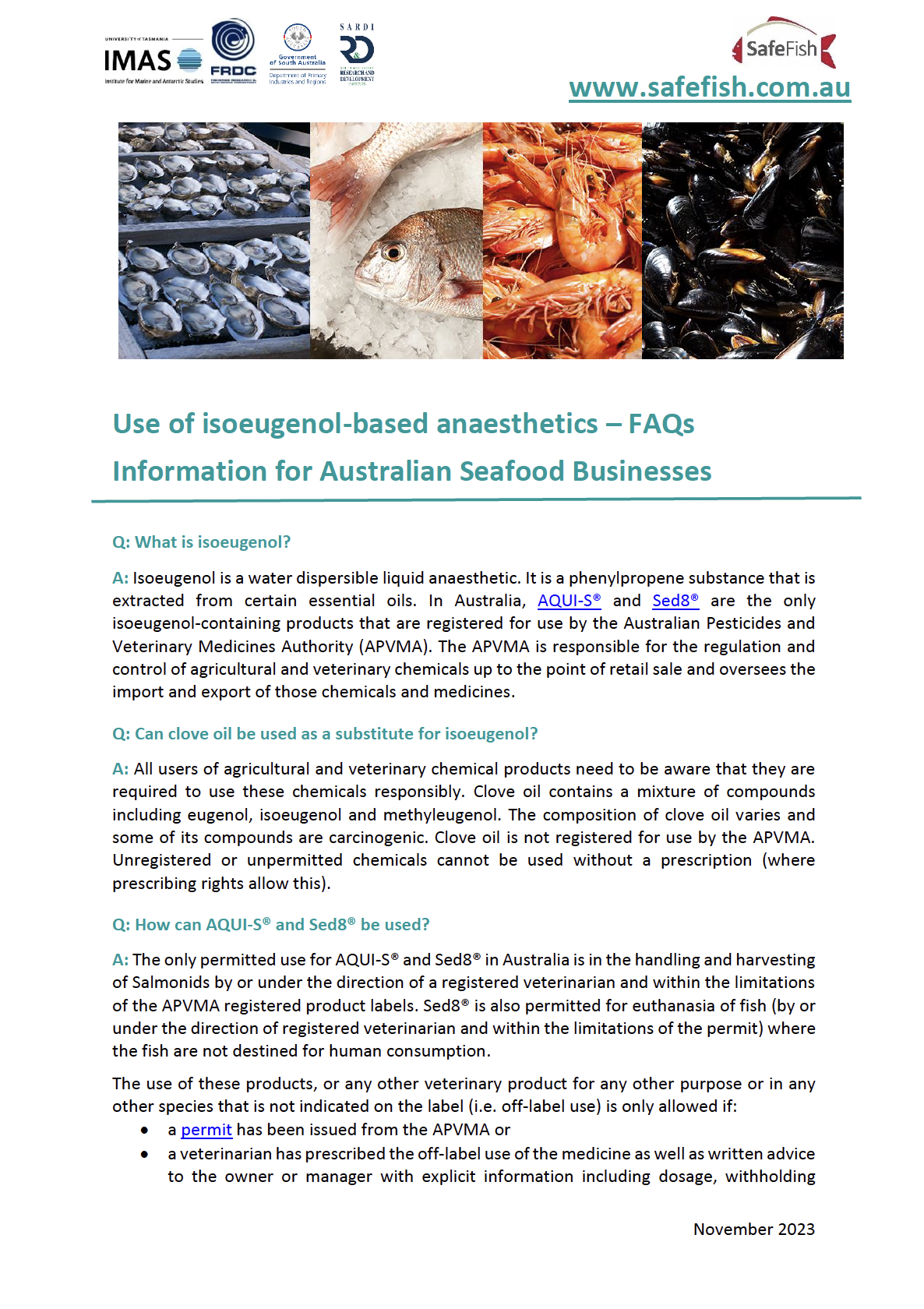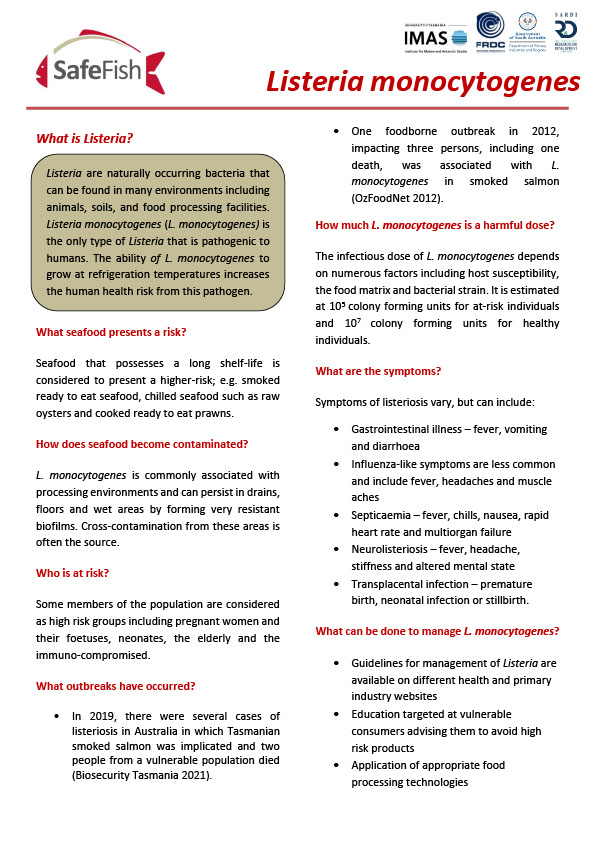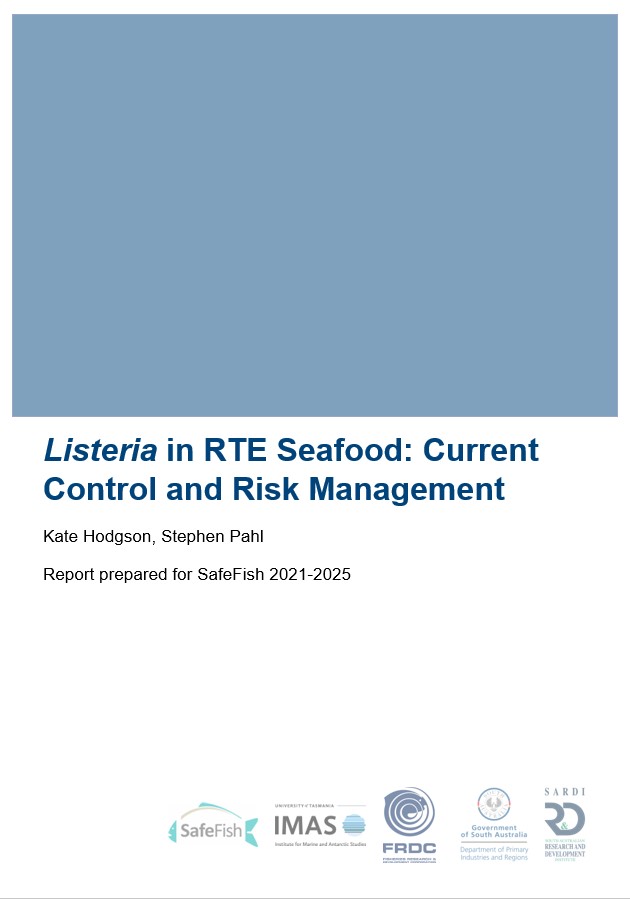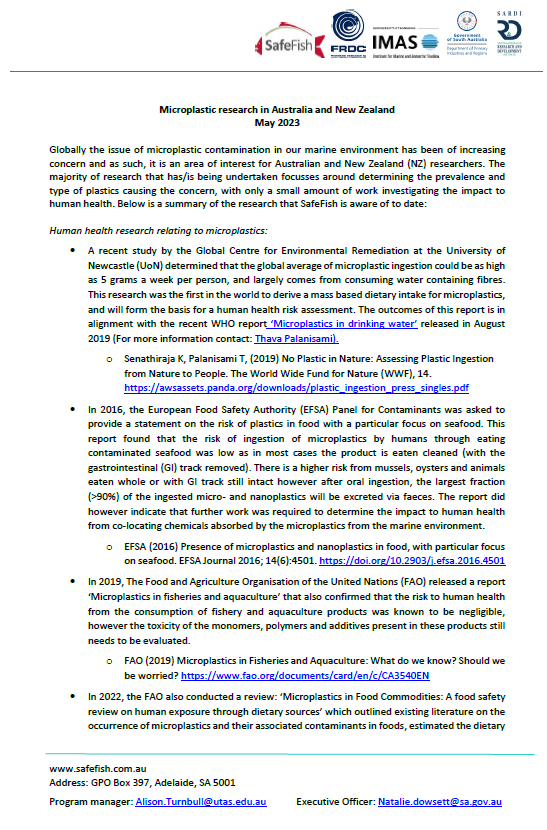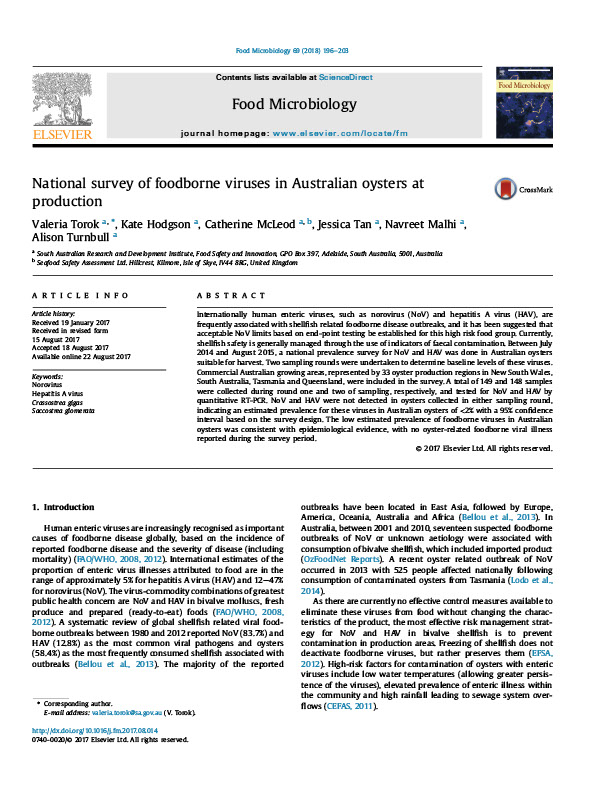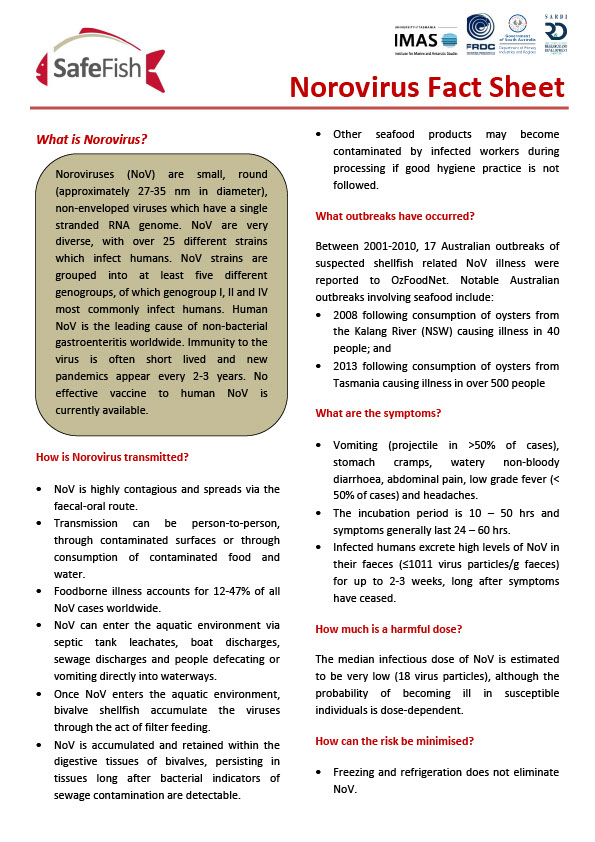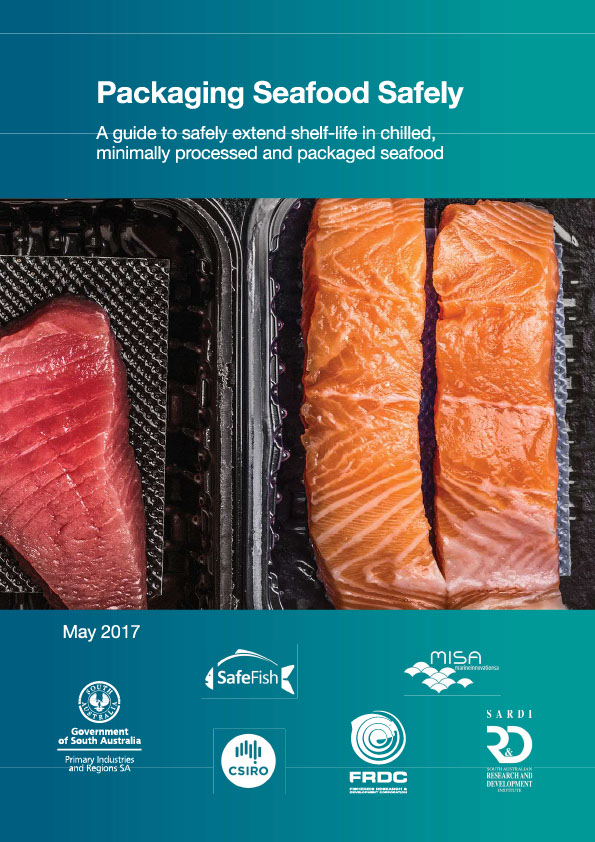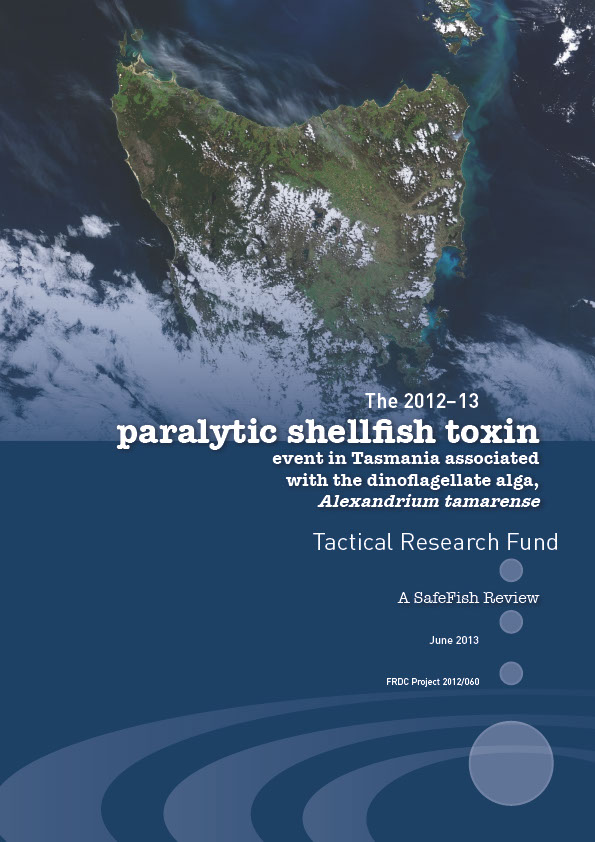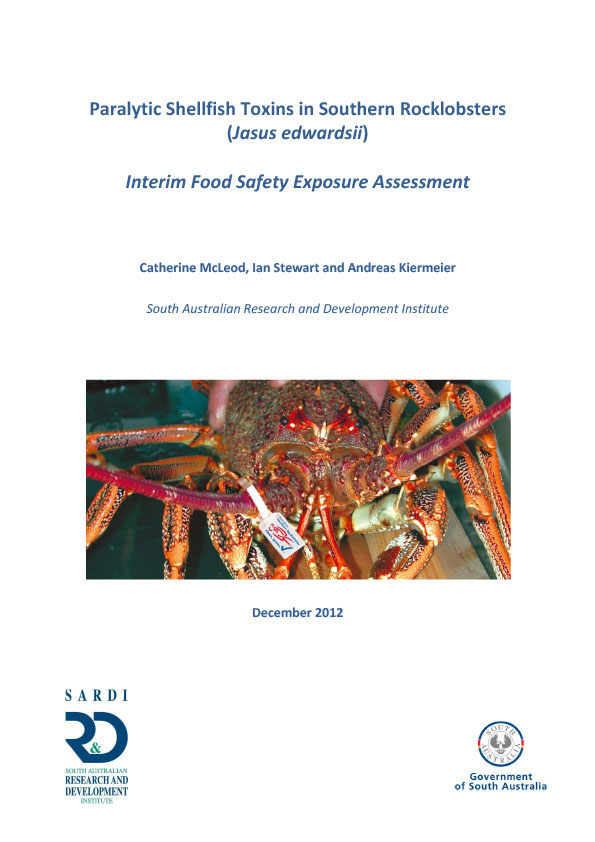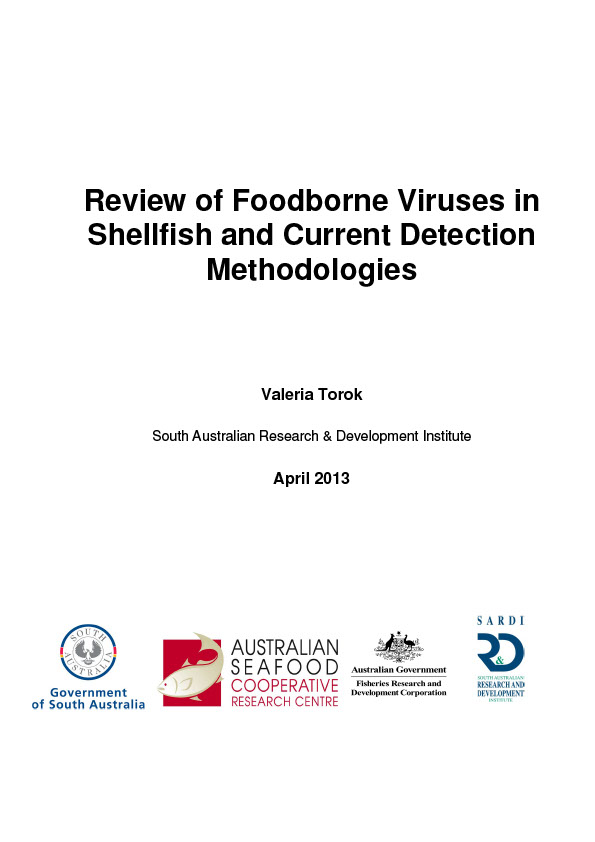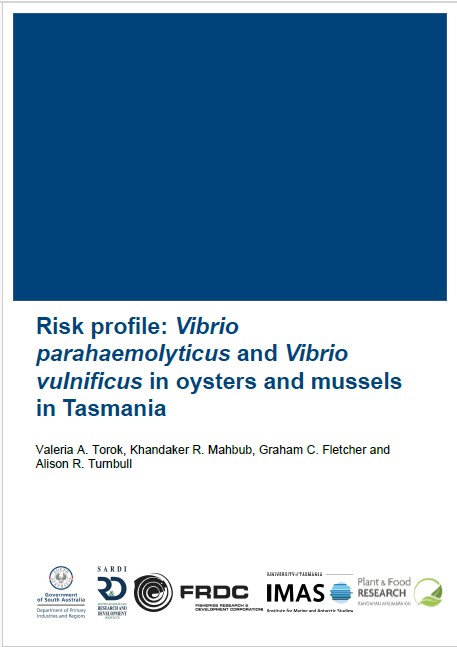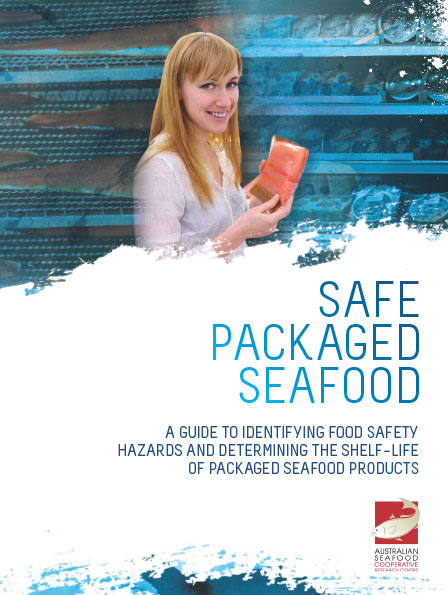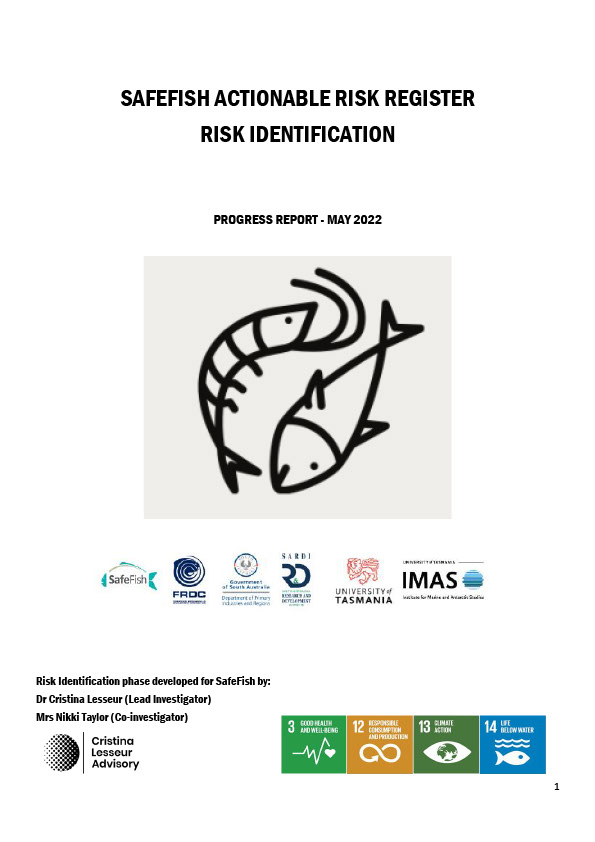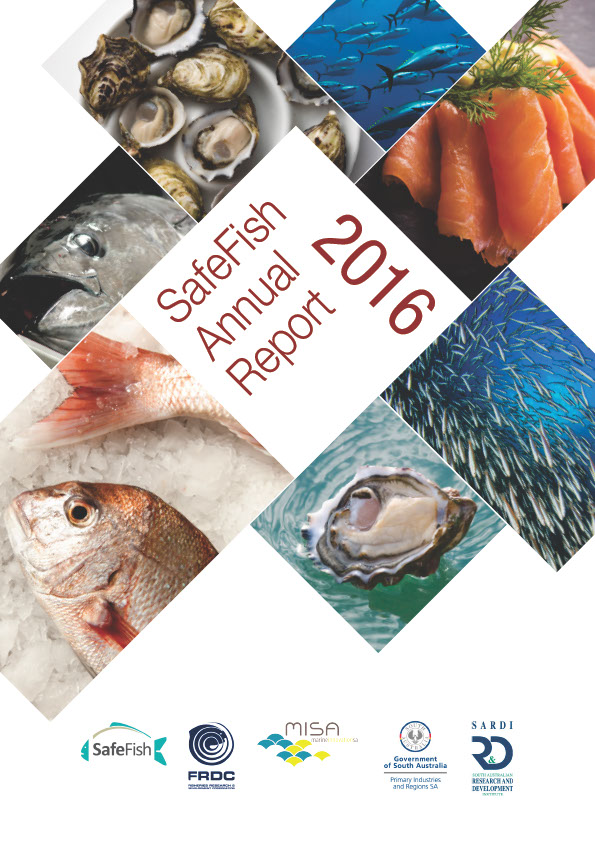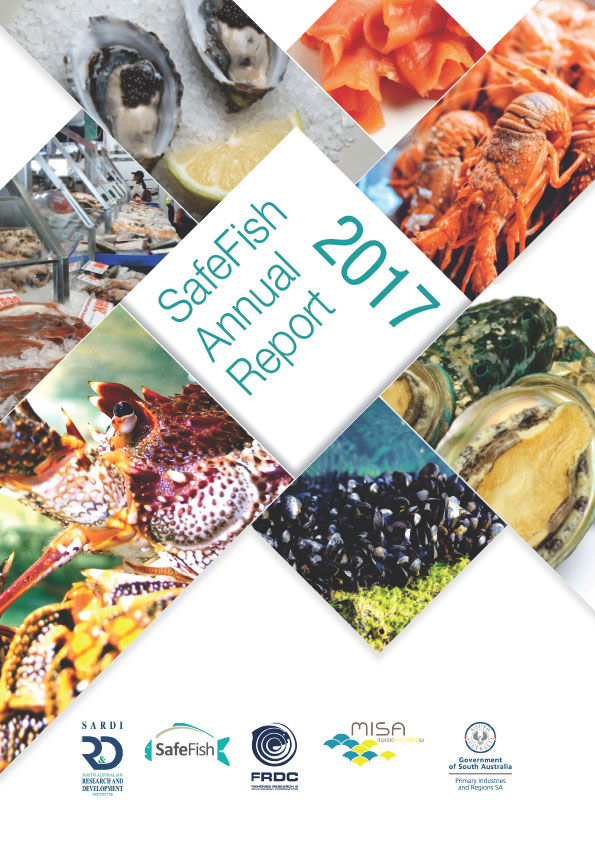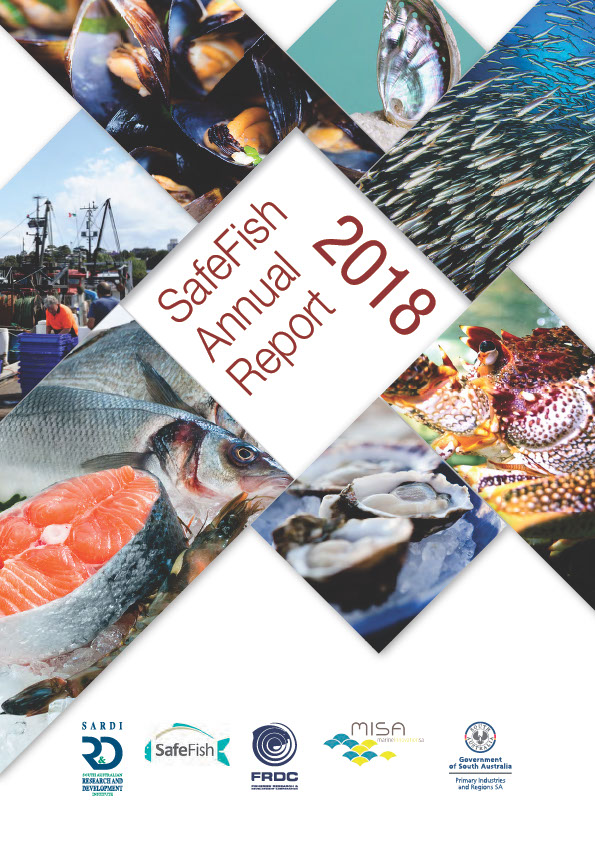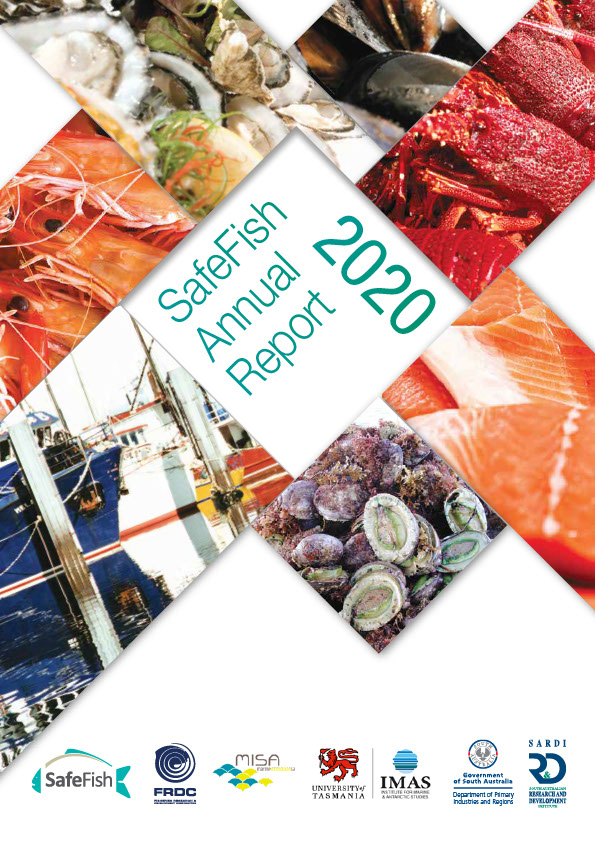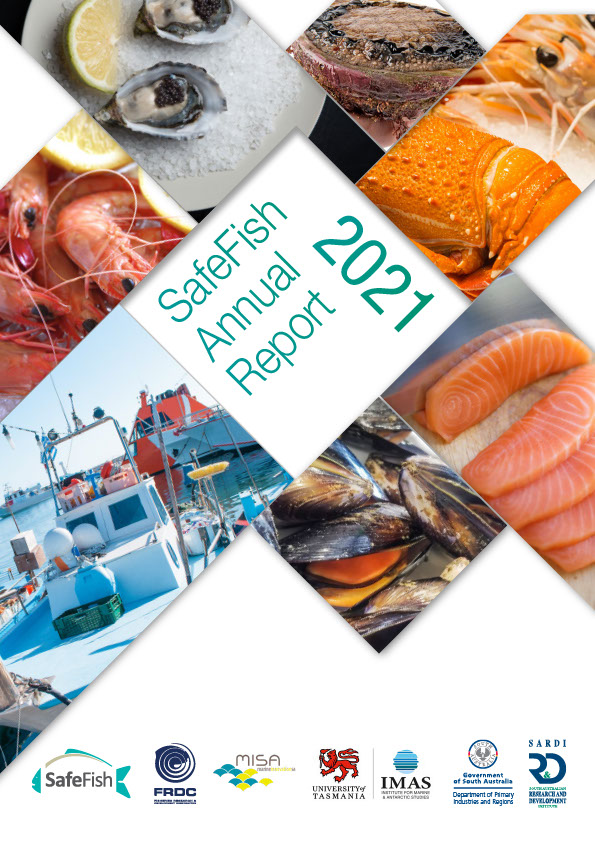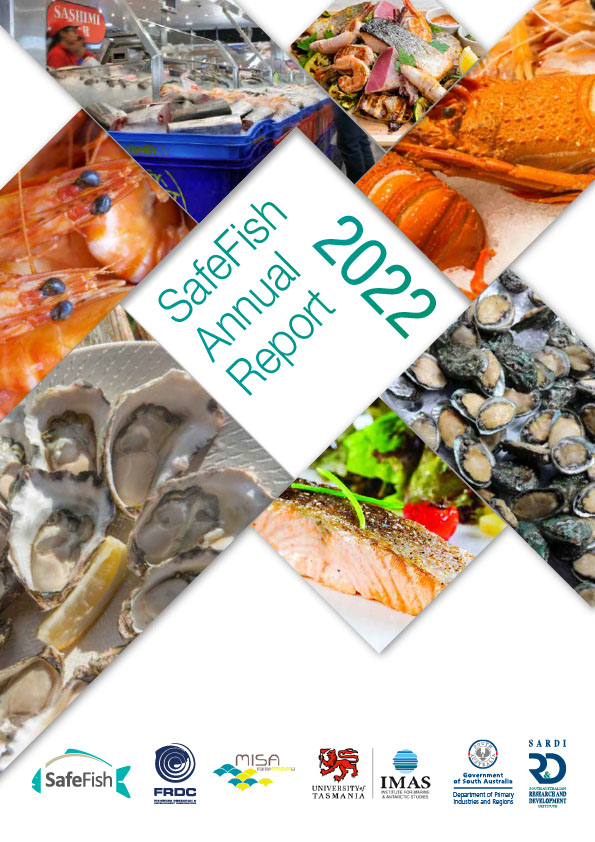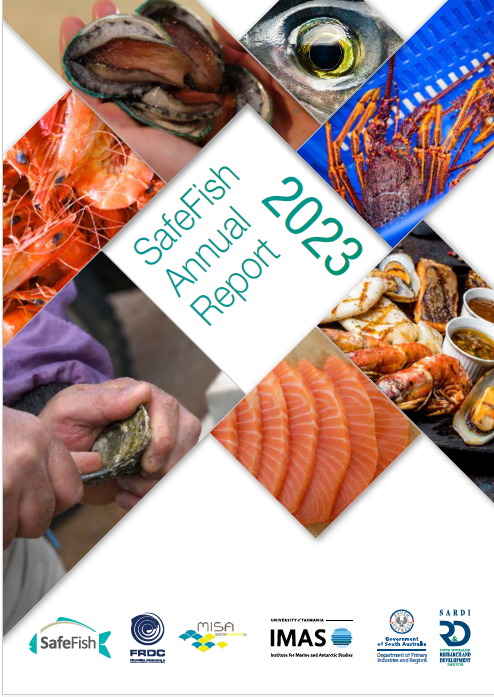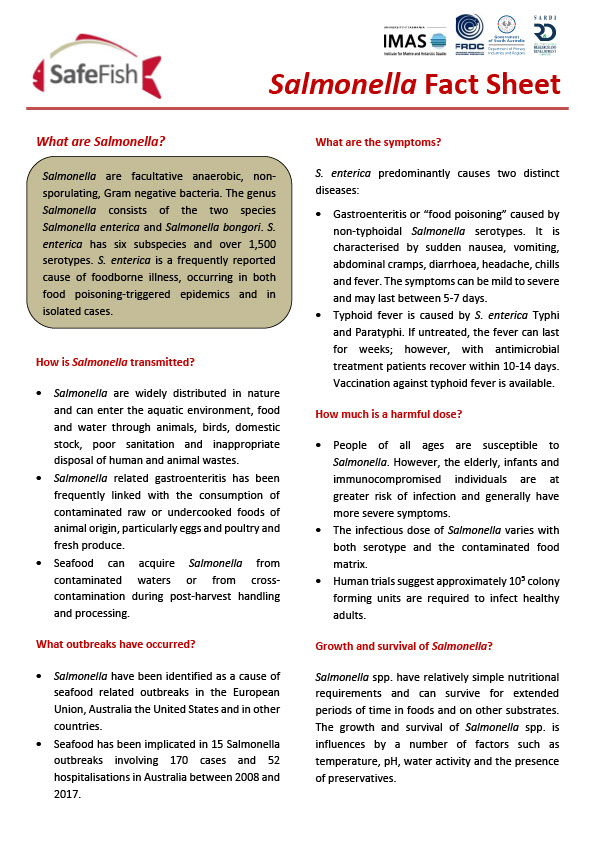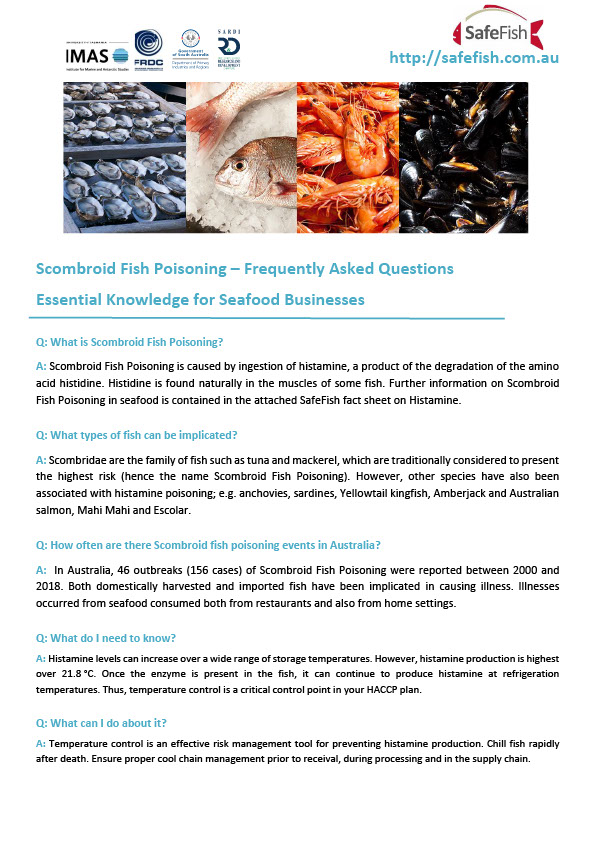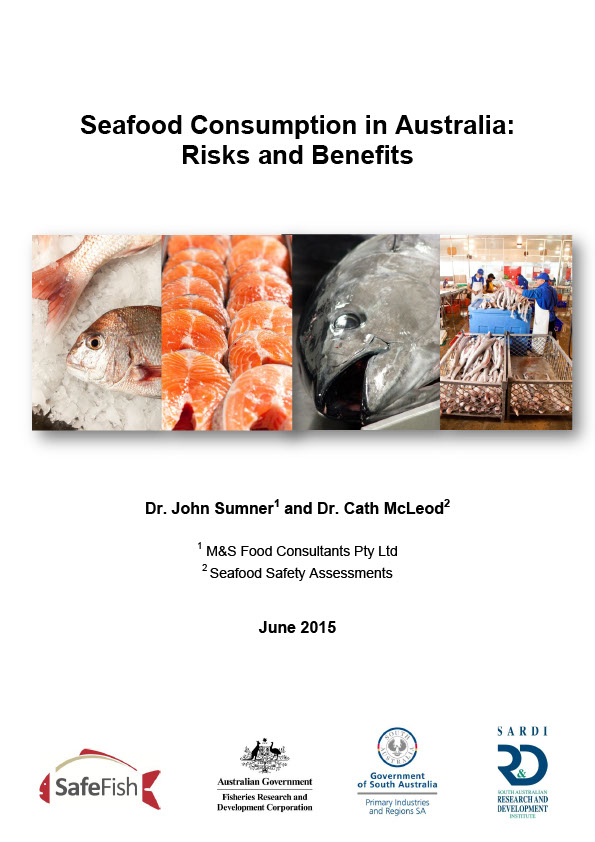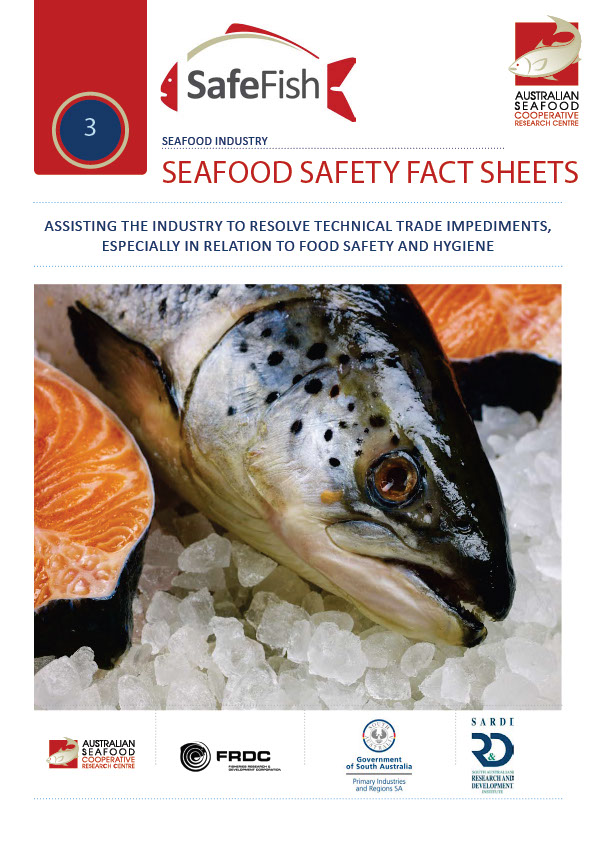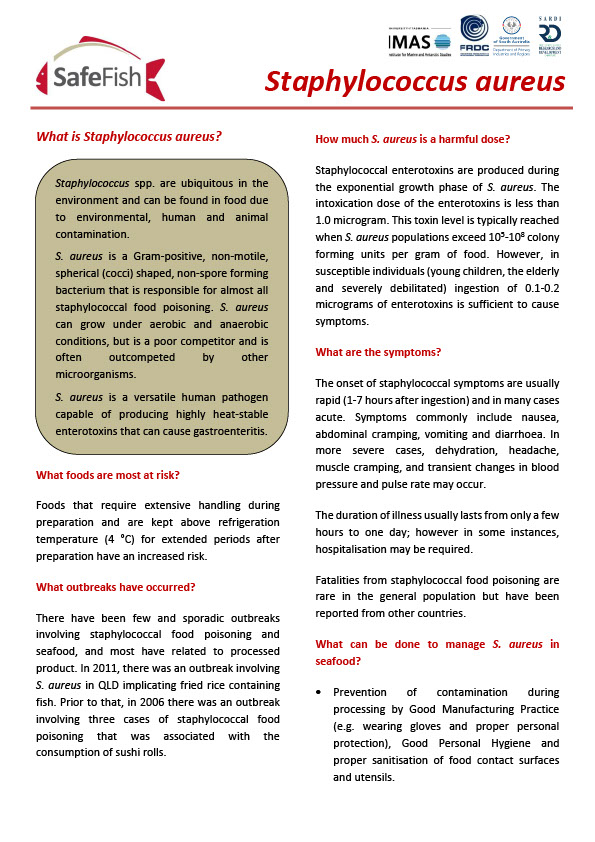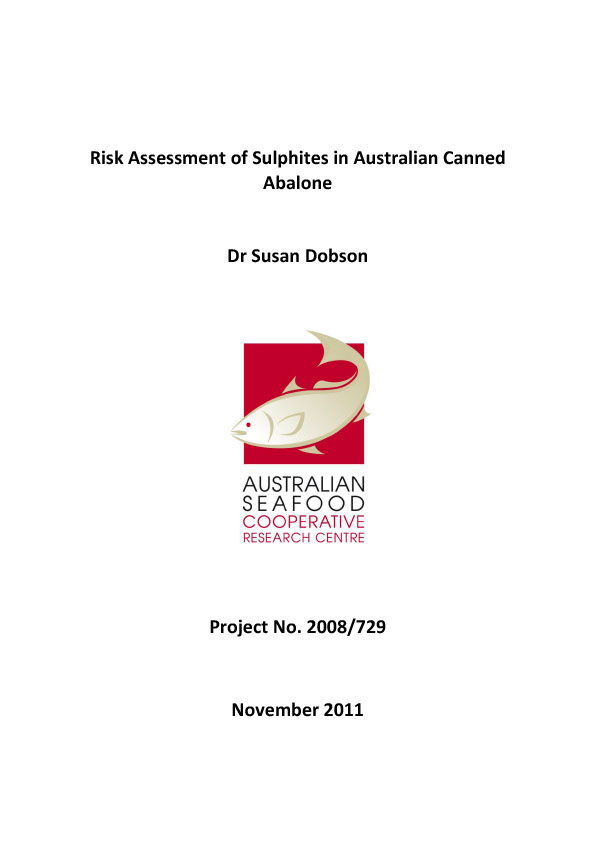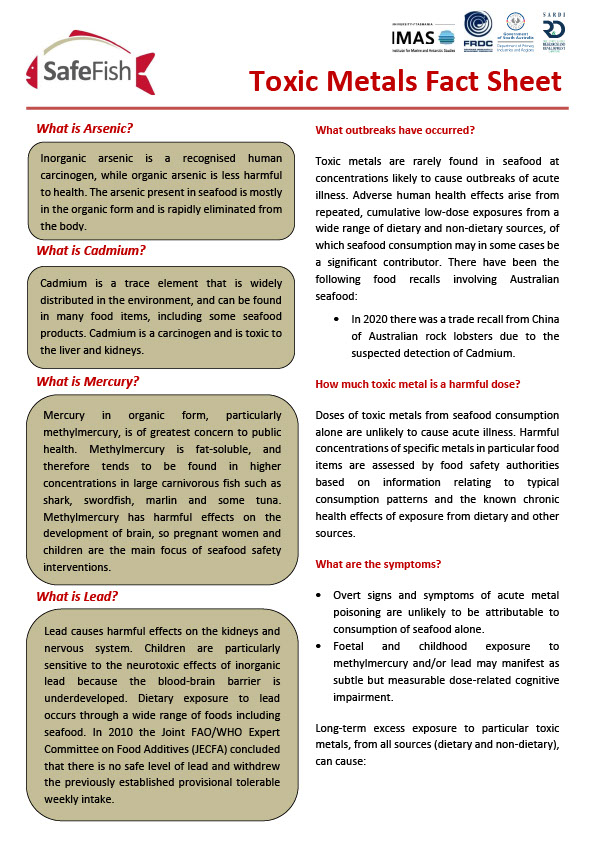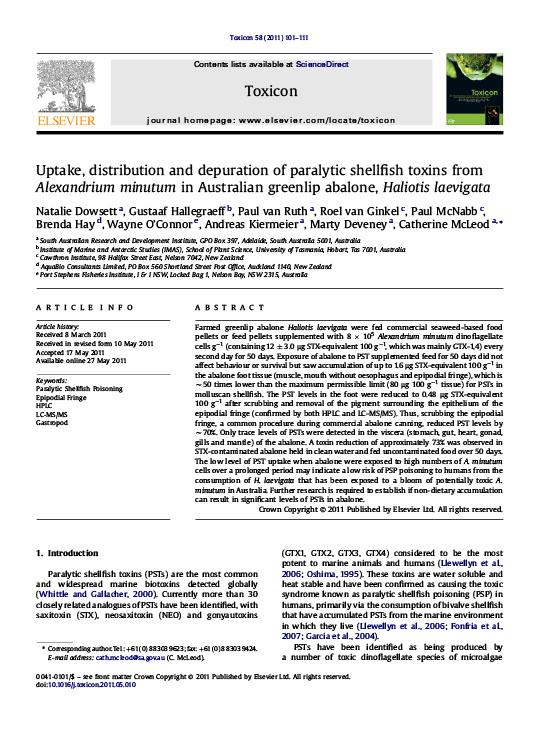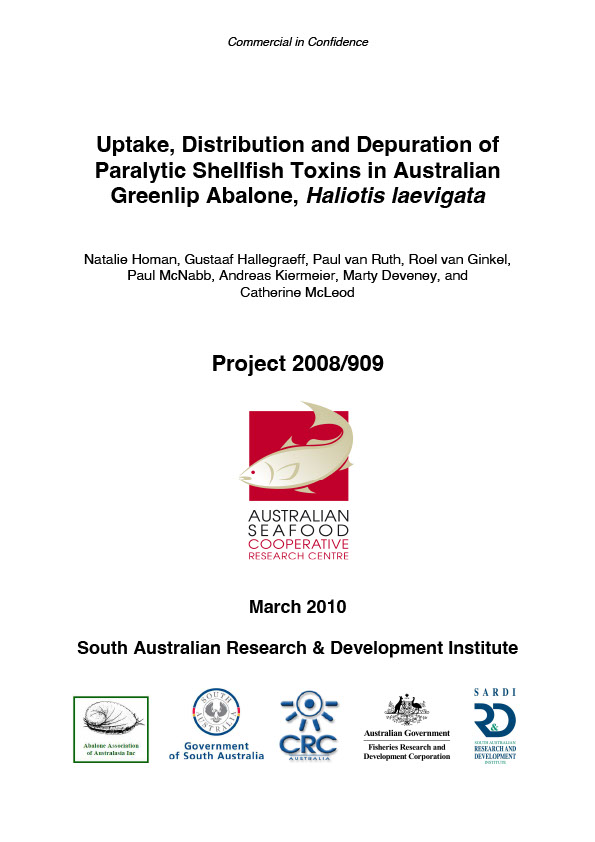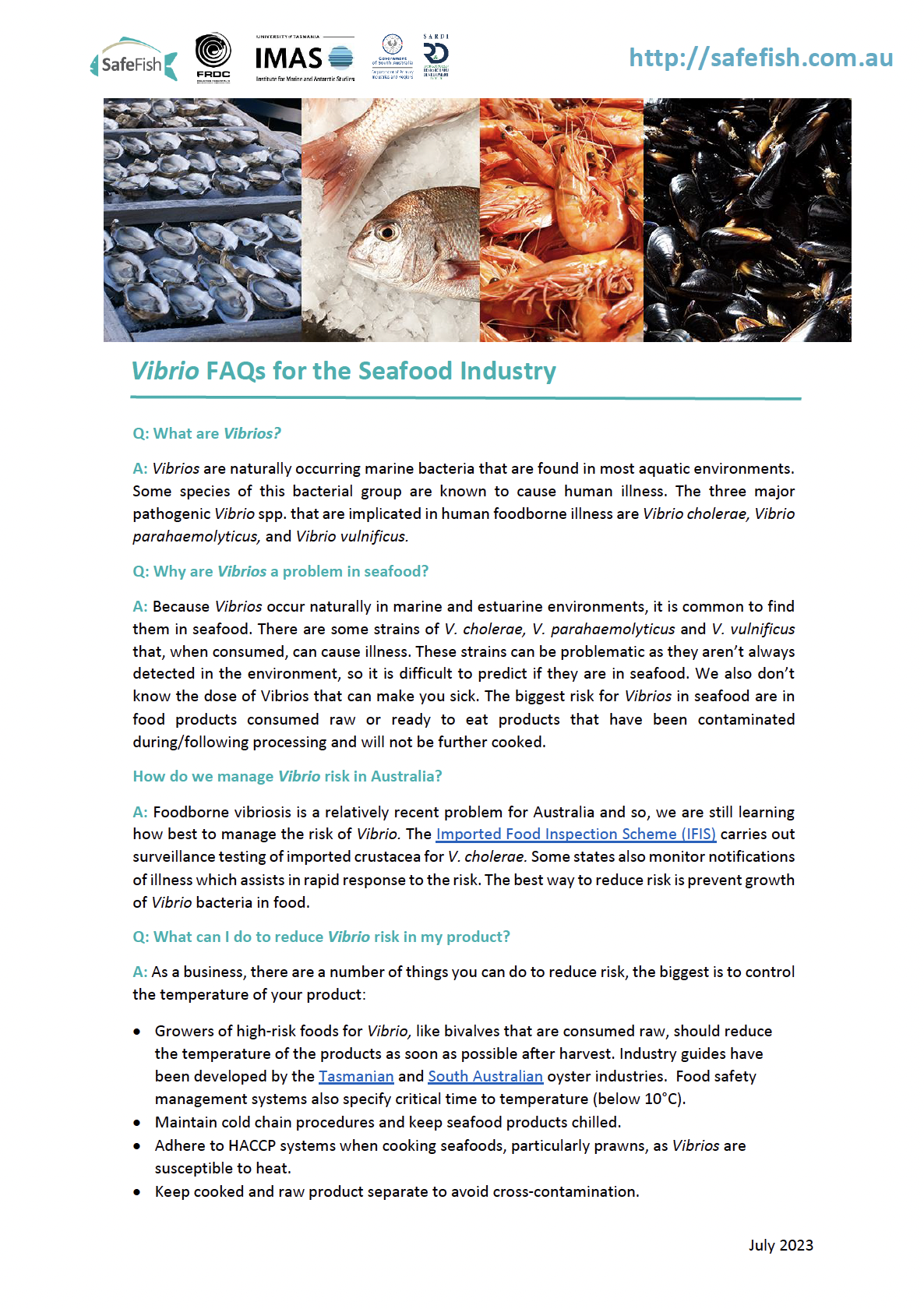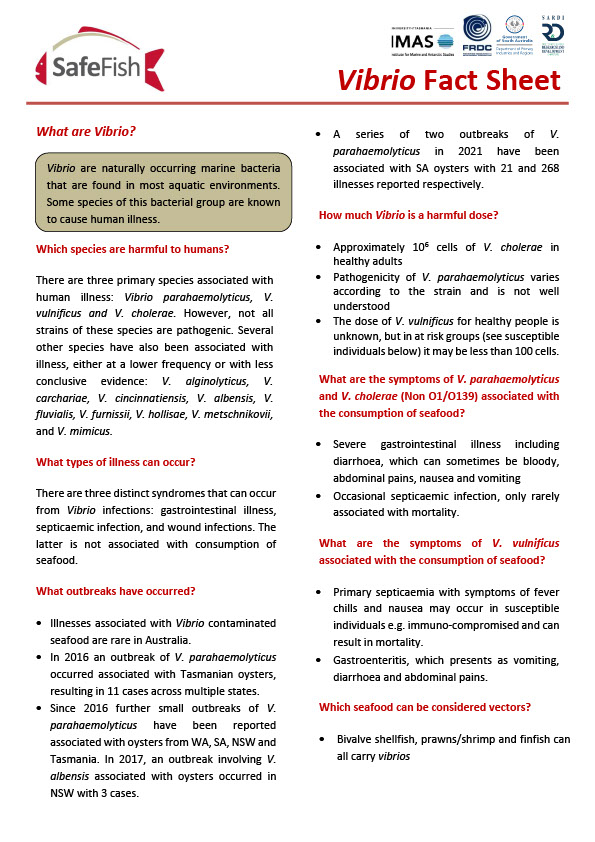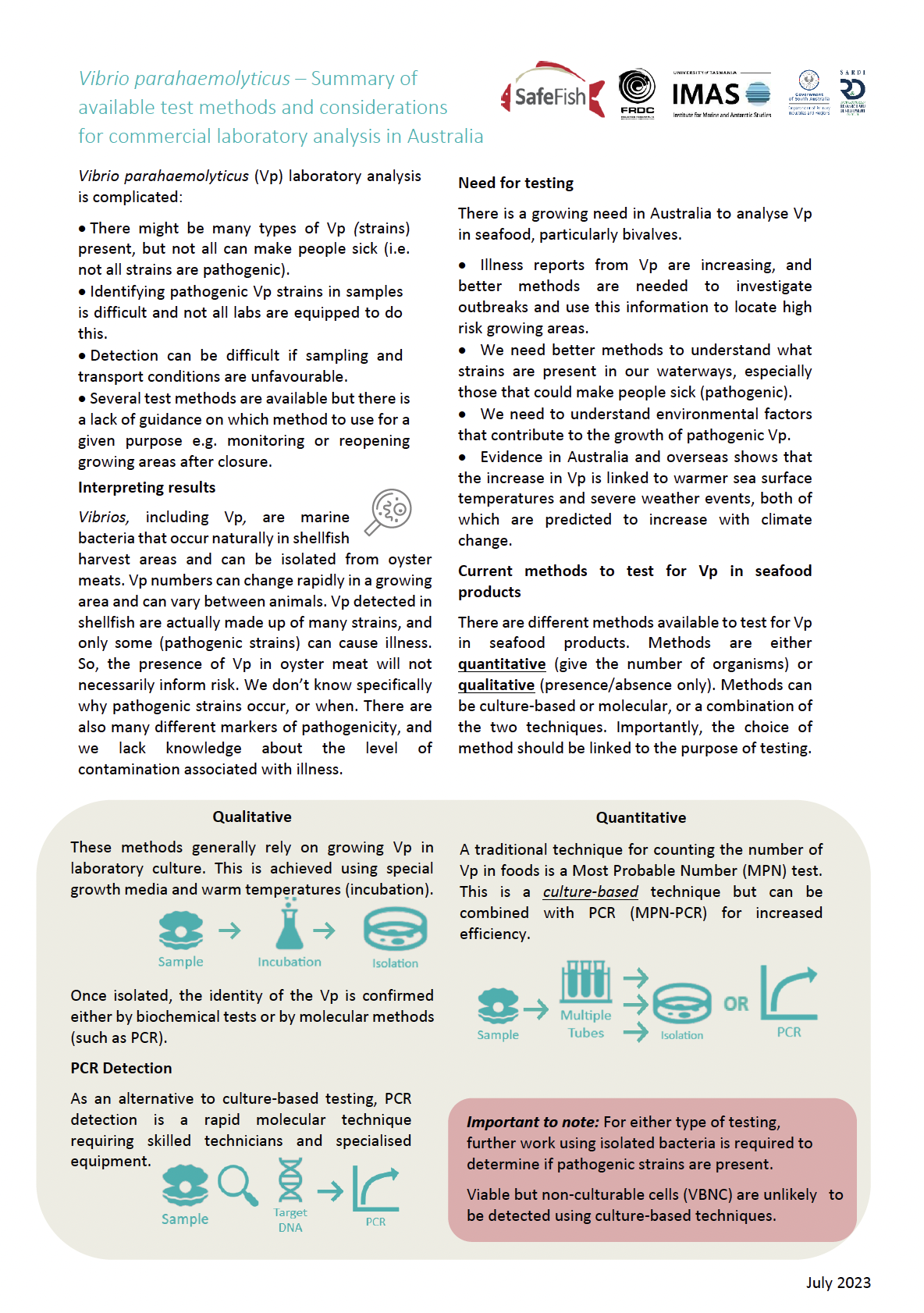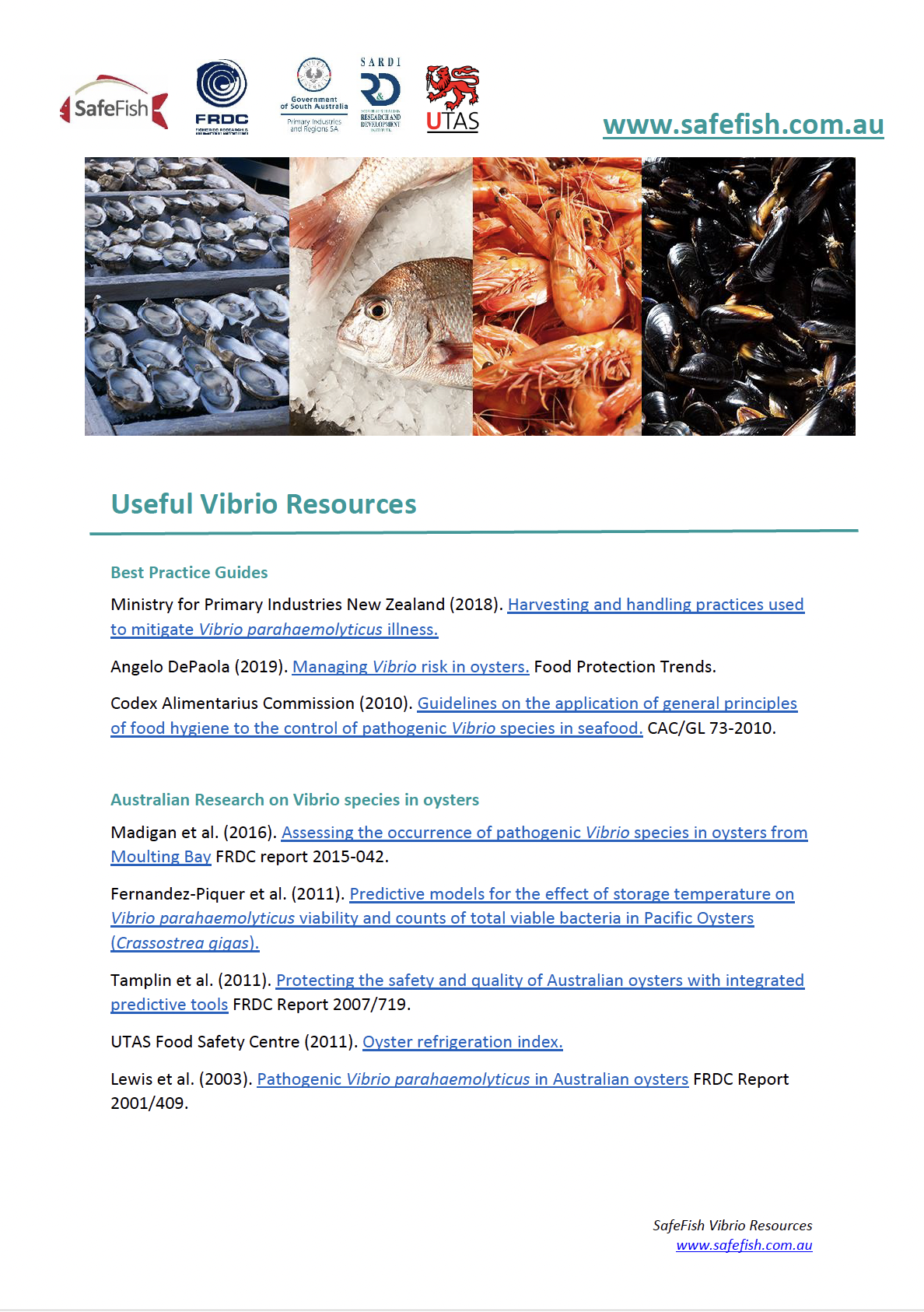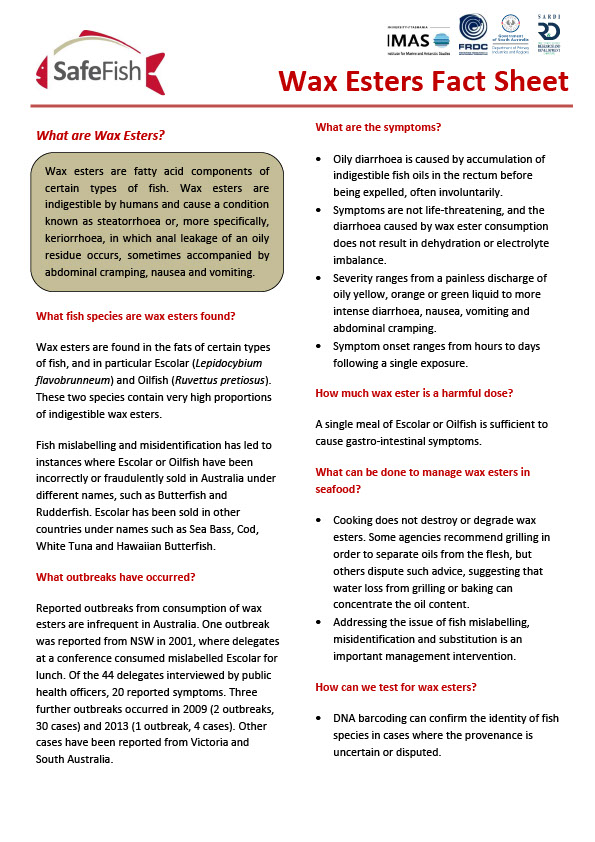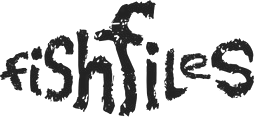Accumulation and elimination of PST in Haliotis Rubra
Accumulation and Elimination of Paralytic Shellfish Toxins by Haliotis rubra During Blooms of Gymnodinium catenatum and Alexandrium tamarense in Tasmania
Wild-caught Australian abalone were monitored for the presence of marine biotoxins during three consecutive algal blooms.
Guide to Identification of Food Safety Hazards and Shelf-life of Packaged Seafood
A Guide to the Identification of Food Safety Hazards and Determination of Shelf-life of Packaged Seafood
Comprehensive guide for seafood processors that are developing new packaged seafood products to understand food safety risks, shelf-life, packaging techniques and HACCP plans.
Improving Management of Risk of Human Enteric Viruses in Shellfish at Harvest
Improving the Management of the Risk of Human Enteric Viruses in Shellfish at Harvest
The basis of the research is retrospective analysis across eight case studies drawn from New Zealand and New South Wales each based on a NoV illness event associated with the consumption of oysters that were identified as having been contaminated with NoV before harvest.
Investigation of F-RNA Bacteriophage
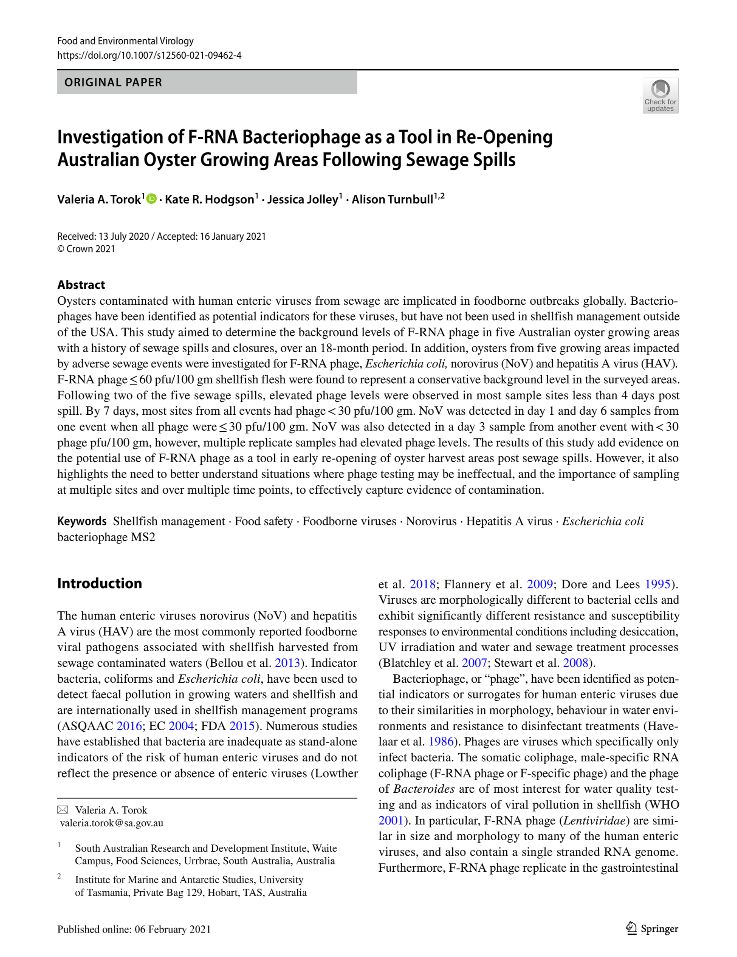
Investigation of F-RNA Bacteriophage as a Tool in Re-opening Australian Oyster Growing Areas Following Sewage Spills
This paper details the use of bacteriophages to detect human enteric viruses in oysters and using them as a management tool.
Isoeugenol - AQUI-S FAQ
Isoeugenol -AQUI-S FAQ
Isoeugenol is a water dispersible liquid anaesthetic. It is a phenylpropene substance that is extracted from certain essential oils. In Australia, AQUI-S® and Sed8® are the only isoeugenol-containing products that are registered for use by the Australian Pesticides and Veterinary Medicines Authority (APVMA).
Listeria in RTE Seafood: Current Control and Risk Management
Listeria in RTE Seafood: Current Control and Risk Management
Listeria monocytogenes is the only species associated with human illness. The presence of Listeria in raw foods is probably unavoidable and elimination can be difficult to achieve. This report consolidates current Listeria controls and risk management for seafood products.
Neogen Validation - PST in Mussels and Oysters
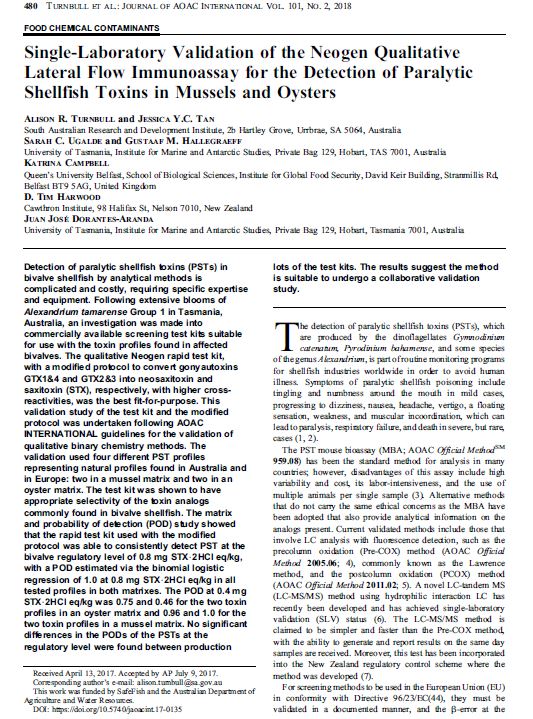
Single-Laboratory Validation of the Neogen Qualitative Lateral Flow Immunoassay for the Detection of Paralytic Shellfish Toxins in Mussels and Oysters
This paper details the single lab validation of the Neogen Qualitative method for the detection of PSTs in Mussels and Oysters
Paralytic Shellfish Toxins - Uniform Reporting Units
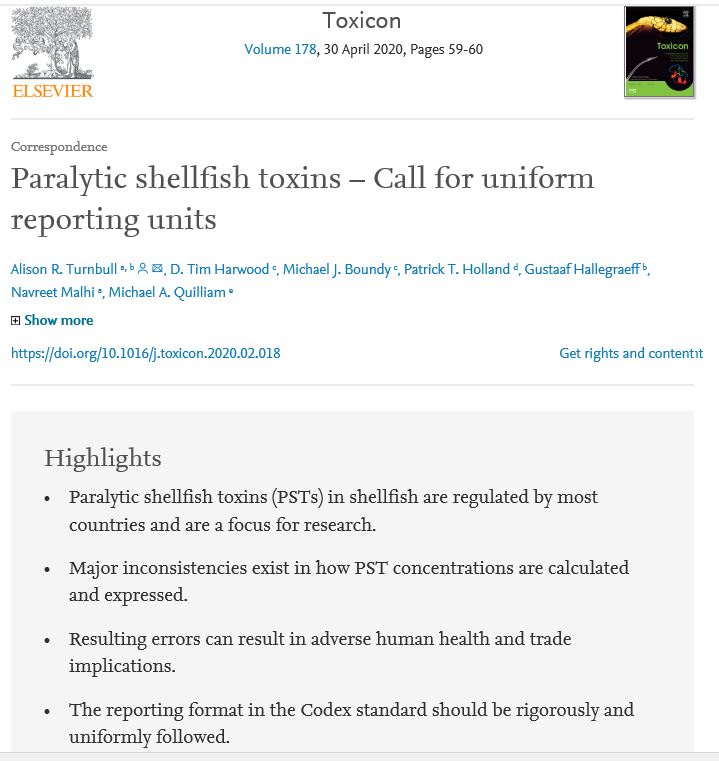
Paralytic shellfish toxins – Call for uniform reporting units
This paper details the major inconsistencies with how PST concentrations are calculated and expressed.
Paralytic Shellfish Toxins in Mussels and Oysters
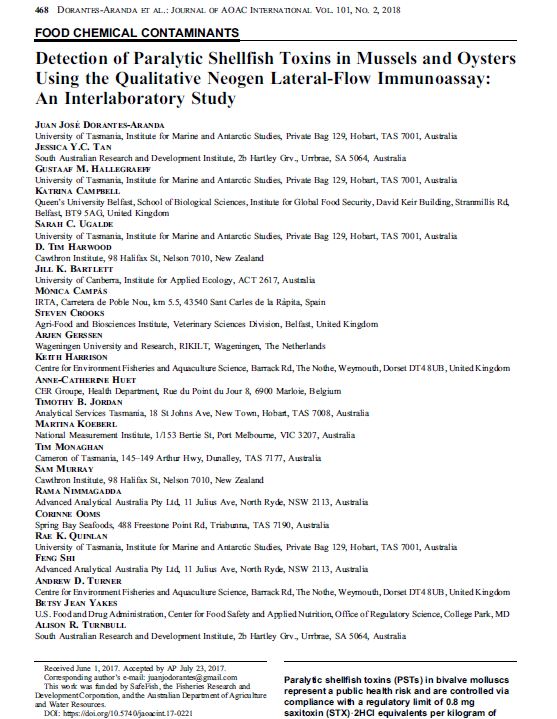
Detection of Paralytic Shellfish Toxins in Mussels and Oysters Using the Qualitative Neogen Lateral-Flow Immunoassay: An Interlaboratory Study
This paper details the results of using Neogen lateral flow mmunoassay testing to detect PSTs in Mussels and Oysters.
Paralytic Shellfish Toxins in Southern Rocklobster
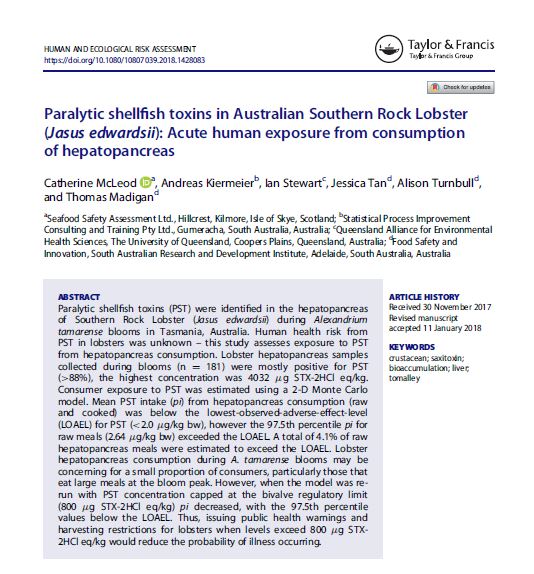
Paralytic Shellfish Toxins in Australian Southern Rocklobster (Jasus edwardsii): Acute Human Exposure from Consumption of Hepatopancreas
PSTs have been identified in the hepatopancreas of S Rock Lobsters. This study assesses the exposure to PST from hepatopancreas consumption.
Perfluoroalkyated (PFAS) Substances
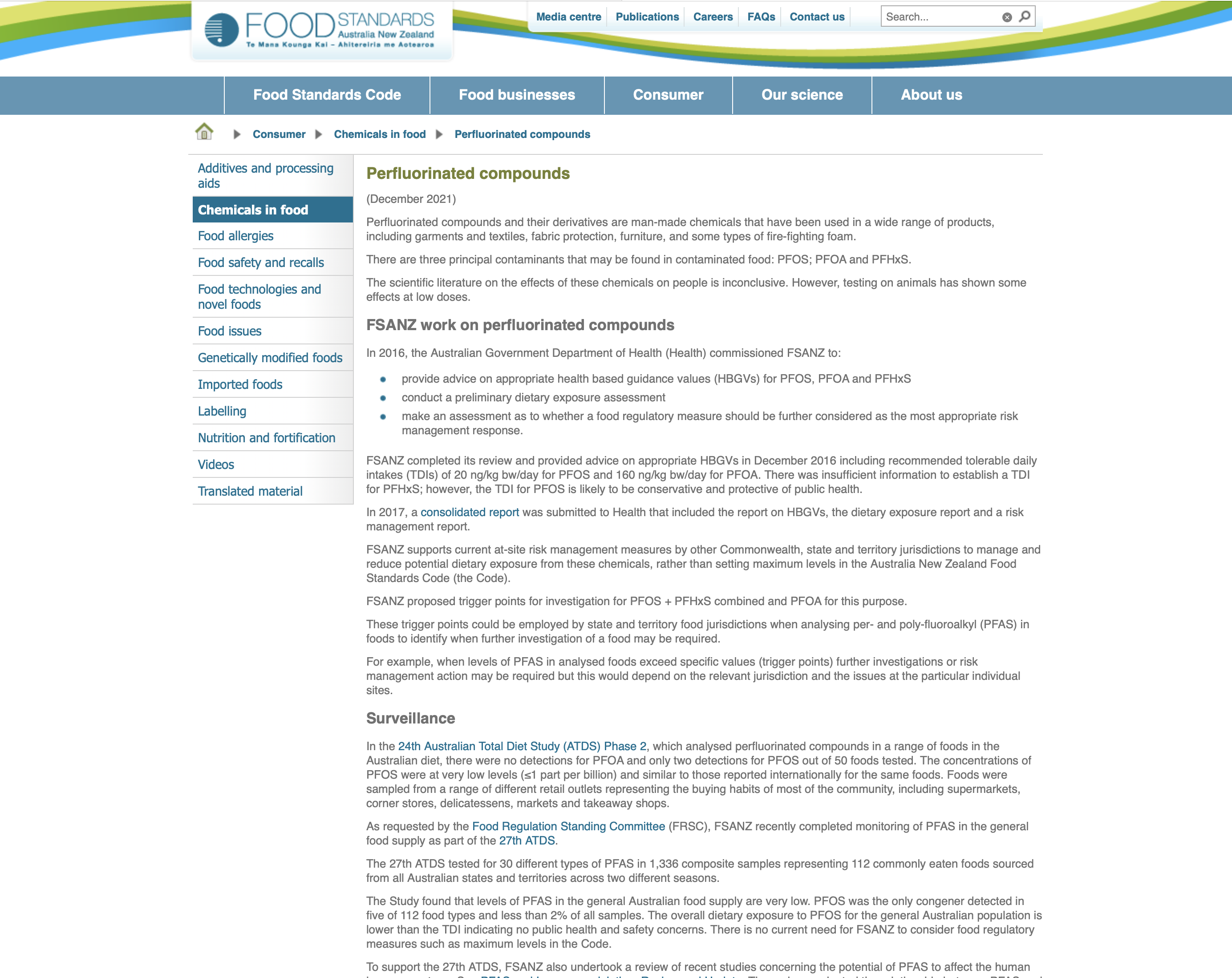
Perfluoroalkylated (PFAS) Substances FSANZ
In April 2017, FSANZ undertook a review on PFAS chemicals in food.
Risk profile: Vibrio parahaemolyticus and Vibrio vulnificus in oysters and mussels in Tasmania
Risk profile: Vibrio parahaemolyticus and Vibrio vulnificus in oysters and mussels in Tasmania
This risk profile was commissioned following the 2016 multi-jurisdictional outbreak of Vibrio parahaemolyticus associated with Tasmanian shellfish. A pilot survey identified potentially pathogenic V. parahaemolyticus at harvest and Vibrio Control Plans were implemented. The risk profile considers information from a 2.5 year Vibrio survey of 11 oyster growing areas in Tasmania.
Update, distribution and depuration of PST in Aus Green-lip abalone
Uptake, distribution and depuration of paralytic shellfish toxins from Alexandrium minutum in Australian greenlip abalone, Haliotis laevigata
This paper details research into if Australian abalone have the propensity to take up marine biotoxins.
Reportsuser_012023-11-21T06:56:45+11:00
